AMD Ryzen Threadripper 1920X vs Intel Core i7-8700K: What is the difference?
57points
AMD Ryzen Threadripper 1920X
59points
Intel Core i7-8700K
vs
64 facts in comparison
AMD Ryzen Threadripper 1920X
Intel Core i7-8700K
Why is AMD Ryzen Threadripper 1920X better than Intel Core i7-8700K?
- 1.89x faster CPU speed?
12 x 3.5GHzvs6 x 3.7GHz - 12 more CPU threads?
24vs12 - 4.5MB bigger L2 cache?
6MBvs1.5MB - 41.74% higher PassMark result?
23061vs16270 - 20MB bigger L3 cache?
32MBvs12MB - 1116KB bigger L1 cache?
1500KBvs384KB - 0.25MB/core more L2 cache per core?
0.5MB/corevs0.25MB/core - 42.6GB/s more memory bandwidth?
85.3GB/svs42.7GB/s
Why is Intel Core i7-8700K better than AMD Ryzen Threadripper 1920X?
- 32°C higher maximum operating temperature?
100°Cvs68°C - 0.
7GHz higher turbo clock speed?
4.7GHzvs4GHz - 85W lower TDP?
95Wvs180W - Has integrated graphics?
- 18.92% higher PassMark result (single)?
2728vs2294
Which are the most popular comparisons?
AMD Ryzen Threadripper 1920X
vs
AMD Ryzen 7 5800X
Intel Core i7-8700K
vs
Intel Core i5-12400
AMD Ryzen Threadripper 1920X
vs
AMD Ryzen 9 5900X
Intel Core i7-8700K
vs
AMD Ryzen 5 5600X
AMD Ryzen Threadripper 1920X
vs
AMD Ryzen 5 5600X
Intel Core i7-8700K
vs
AMD Ryzen 5 5500U
AMD Ryzen Threadripper 1920X
vs
Intel Core i9-9900K
Intel Core i7-8700K
vs
Intel Core i7-9700K
AMD Ryzen Threadripper 1920X
vs
AMD Ryzen 9 5950X
Intel Core i7-8700K
vs
AMD Ryzen 5 5600G
AMD Ryzen Threadripper 1920X
vs
AMD Ryzen 5 3600
Intel Core i7-8700K
vs
AMD Ryzen 5 3600
AMD Ryzen Threadripper 1920X
vs
Intel Core i7-7700K
Intel Core i7-8700K
vs
Intel Core i5-9600K
AMD Ryzen Threadripper 1920X
vs
Intel Core i7-5820K
Intel Core i7-8700K
vs
AMD Ryzen 7 3700X
AMD Ryzen Threadripper 1920X
vs
AMD Ryzen 9 3900X
Intel Core i7-8700K
vs
Apple M1 Max
AMD Ryzen Threadripper 1920X
vs
AMD Ryzen 7 2700X
Intel Core i7-8700K
vs
Apple M1
Price comparison
Cheap alternatives
User reviews
Overall Rating
AMD Ryzen Threadripper 1920X
0 User reviews
AMD Ryzen Threadripper 1920X
0.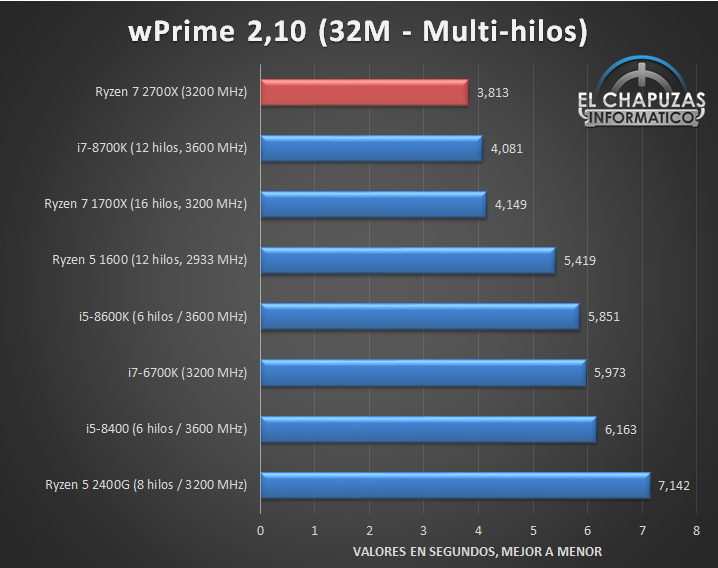 0/10
0/10
0 User reviews
Intel Core i7-8700K
1 User reviews
Intel Core i7-8700K
10.0/10
1 User reviews
Features
Value for money
No reviews yet
10.0/10
1 votes
Gaming
No reviews yet
10.0/10
1 votes
Performance
No reviews yet
10.0/10
1 votes
Reliability
No reviews yet
10.0/10
1 votes
Energy efficiency
No reviews yet
10.0/10
1 votes
Performance
1.CPU speed
12 x 3.5GHz
6 x 3.7GHz
The CPU speed indicates how many processing cycles per second can be executed by a CPU, considering all of its cores (processing units). It is calculated by adding the clock rates of each core or, in the case of multi-core processors employing different microarchitectures, of each group of cores.
2.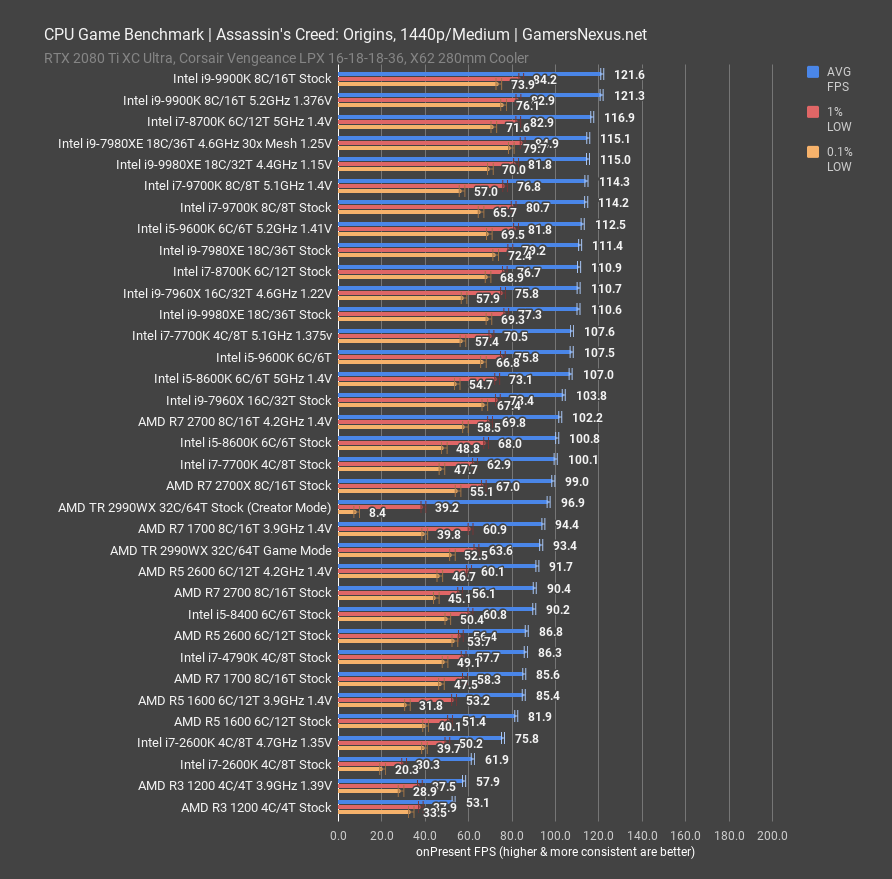 CPU threads
CPU threads
More threads result in faster performance and better multitasking.
3.turbo clock speed
4.7GHz
When the CPU is running below its limitations, it can boost to a higher clock speed in order to give increased performance.
4.Has an unlocked multiplier
✔AMD Ryzen Threadripper 1920X
✔Intel Core i7-8700K
Some processors come with an unlocked multiplier which makes them easy to overclock, allowing you to gain increased performance in games and other apps.
5.L2 cache
A larger L2 cache results in faster CPU and system-wide performance.
6.L3 cache
A larger L3 cache results in faster CPU and system-wide performance.
7.L1 cache
1500KB
A larger L1 cache results in faster CPU and system-wide performance.
8.L2 core
0. 5MB/core
5MB/core
0.25MB/core
More data can be stored in the L2 cache for access by each core of the CPU.
9.L3 core
2.6MB/core
2MB/core
More data can be stored in the L3 cache for access by each core of the CPU.
Memory
1.RAM speed
2667MHz
2666MHz
It can support faster memory, which will give quicker system performance.
2.maximum memory bandwidth
85.3GB/s
42.7GB/s
This is the maximum rate that data can be read from or stored into memory.
3.DDR memory version
Unknown. Help us by suggesting a value. (AMD Ryzen Threadripper 1920X)
DDR (Double Data Rate) memory is the most common type of RAM. Newer versions of DDR memory support higher maximum speeds and are more energy-efficient.
4.memory channels
More memory channels increases the speed of data transfer between the memory and the CPU.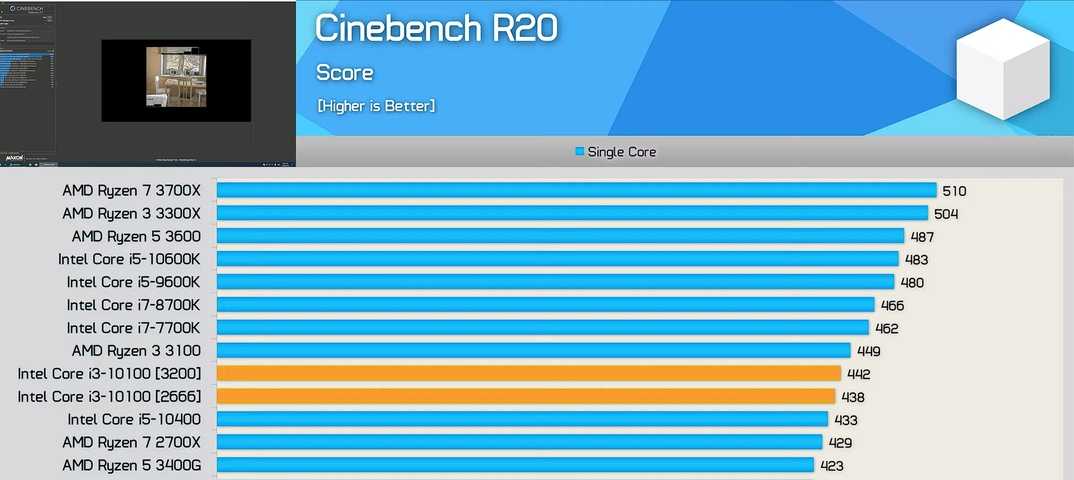
5.maximum memory amount
Unknown. Help us by suggesting a value. (AMD Ryzen Threadripper 1920X)
The maximum amount of memory (RAM) supported.
6.bus transfer rate
The bus is responsible for transferring data between different components of a computer or device.
7.Supports ECC memory
✔AMD Ryzen Threadripper 1920X
✖Intel Core i7-8700K
Error-correcting code memory can detect and correct data corruption. It is used when is it essential to avoid corruption, such as scientific computing or when running a server.
8.eMMC version
Unknown. Help us by suggesting a value. (AMD Ryzen Threadripper 1920X)
Unknown. Help us by suggesting a value. (Intel Core i7-8700K)
A higher version of eMMC allows faster memory interfaces, having a positive effect on the performance of a device. For example, when transferring files from your computer to the internal storage over USB.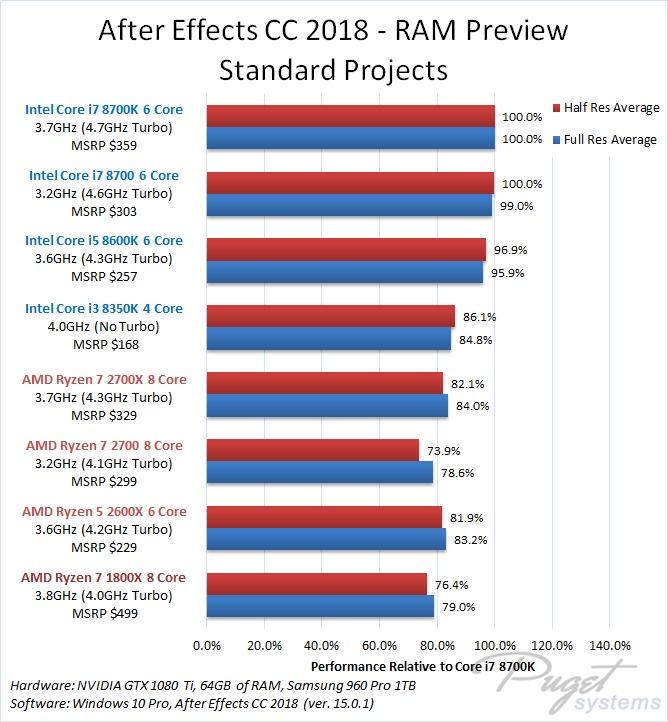
9.bus speed
Unknown. Help us by suggesting a value. (AMD Ryzen Threadripper 1920X)
Unknown. Help us by suggesting a value. (Intel Core i7-8700K)
The bus is responsible for transferring data between different components of a computer or device.
Benchmarks
1.PassMark result
This benchmark measures the performance of the CPU using multiple threads.
2.PassMark result (single)
This benchmark measures the performance of the CPU using a single thread.
3.Geekbench 5 result (multi)
Unknown. Help us by suggesting a value. (Intel Core i7-8700K)
Geekbench 5 is a cross-platform benchmark that measures a processor’s multi-core performance. (Source: Primate Labs, 2022)
4.Cinebench R20 (multi) result
Unknown. Help us by suggesting a value. (AMD Ryzen Threadripper 1920X)
Unknown. Help us by suggesting a value. (Intel Core i7-8700K)
Help us by suggesting a value. (Intel Core i7-8700K)
Cinebench R20 is a benchmark tool that measures a CPU’s multi-core performance by rendering a 3D scene.
5.Cinebench R20 (single) result
Unknown. Help us by suggesting a value. (AMD Ryzen Threadripper 1920X)
Unknown. Help us by suggesting a value. (Intel Core i7-8700K)
Cinebench R20 is a benchmark tool that measures a CPU’s single-core performance by rendering a 3D scene.
6.Geekbench 5 result (single)
Unknown. Help us by suggesting a value. (Intel Core i7-8700K)
Geekbench 5 is a cross-platform benchmark that measures a processor’s single-core performance. (Source: Primate Labs, 2022)
7.Blender (bmw27) result
Unknown. Help us by suggesting a value. (AMD Ryzen Threadripper 1920X)
Unknown. Help us by suggesting a value. (Intel Core i7-8700K)
The Blender (bmw27) benchmark measures the performance of a processor by rendering a 3D scene. More powerful processors can render the scene in less time.
More powerful processors can render the scene in less time.
8.Blender (classroom) result
Unknown. Help us by suggesting a value. (AMD Ryzen Threadripper 1920X)
Unknown. Help us by suggesting a value. (Intel Core i7-8700K)
The Blender (classroom) benchmark measures the performance of a processor by rendering a 3D scene. More powerful processors can render the scene in less time.
9.performance per watt
Unknown. Help us by suggesting a value. (AMD Ryzen Threadripper 1920X)
Unknown. Help us by suggesting a value. (Intel Core i7-8700K)
This means the CPU is more efficient, giving a greater amount of performance for each watt of power used.
Features
1.uses multithreading
✔AMD Ryzen Threadripper 1920X
✔Intel Core i7-8700K
Multithreading technology (such as Intel’s Hyperthreading or AMD’s Simultaneous Multithreading) provides increased performance by splitting each of the processor’s physical cores into virtual cores, also known as threads. This way, each core can run two instruction streams at once.
This way, each core can run two instruction streams at once.
2.Has AES
✔AMD Ryzen Threadripper 1920X
✔Intel Core i7-8700K
AES is used to speed up encryption and decryption.
3.Has AVX
✔AMD Ryzen Threadripper 1920X
✔Intel Core i7-8700K
AVX is used to help speed up calculations in multimedia, scientific and financial apps, as well as improving Linux RAID software performance.
4.SSE version
SSE is used to speed up multimedia tasks such as editing an image or adjusting audio volume. Each new version contains new instructions and improvements.
5.Has F16C
✔AMD Ryzen Threadripper 1920X
✔Intel Core i7-8700K
F16C is used to speed up tasks such as adjusting the contrast of an image or adjusting volume.
6.bits executed at a time
Unknown. Help us by suggesting a value. (AMD Ryzen Threadripper 1920X)
(AMD Ryzen Threadripper 1920X)
Unknown. Help us by suggesting a value. (Intel Core i7-8700K)
NEON provides acceleration for media processing, such as listening to MP3s.
7.Has MMX
✔AMD Ryzen Threadripper 1920X
✔Intel Core i7-8700K
MMX is used to speed up tasks such as adjusting the contrast of an image or adjusting volume.
8.Has TrustZone
✖AMD Ryzen Threadripper 1920X
✖Intel Core i7-8700K
A technology integrated into the processor to secure the device for use with features such as mobile payments and streaming video using digital rights management (DRM).
9.front-end width
Unknown. Help us by suggesting a value. (AMD Ryzen Threadripper 1920X)
Unknown. Help us by suggesting a value. (Intel Core i7-8700K)
The CPU can decode more instructions per clock (IPC), meaning that the CPU performs better
Price comparison
Cancel
Which are the best CPUs?
Intel Core i7 8700K vs AMD Ryzen Threadripper 1920X: performance comparison
VS
Intel Core i7 8700K
AMD Ryzen Threadripper 1920X
We compared two desktop CPUs: the 3. 7 GHz Intel Core i7 8700K with 6-cores against the 3.5 GHz AMD Ryzen Threadripper 1920X with 12-cores. On this page, you’ll find out which processor has better performance in benchmarks, games and other useful information.
7 GHz Intel Core i7 8700K with 6-cores against the 3.5 GHz AMD Ryzen Threadripper 1920X with 12-cores. On this page, you’ll find out which processor has better performance in benchmarks, games and other useful information.
- Review
- Differences
- Performance
- Specs
- Comments
Review
General overview and comparison of the processors
Single-Core Performance
Performance in single-threaded apps and benchmarks
Core i7 8700K
65
Ryzen Threadripper 1920X
53
Performance
Measure performance when all cores are involved
Core i7 8700K
41
Ryzen Threadripper 1920X
66
Power Efficiency
The efficiency score of electricity consumption
Core i7 8700K
41
Ryzen Threadripper 1920X
38
NanoReview Final Score
Generic CPU rating
Core i7 8700K
51
Ryzen Threadripper 1920X
57
Key Differences
What are the key differences between 1920X and 8700K
Advantages of Intel Core i7 8700K
- Consumes up to 47% less energy than the Ryzen Threadripper 1920X – 95 vs 180 Watt
- More than 32° C higher critical temperature
- 32% faster in a single-core Geekbench v5 test — 1242 vs 939 points
- 18% higher Turbo Boost frequency (4.
 7 GHz vs 4 GHz)
7 GHz vs 4 GHz) - Includes an integrated GPU Intel UHD Graphics 630
Advantages of AMD Ryzen Threadripper 1920X
- Supports up to 2048 GB DDR4-2666 RAM
- Has 20 MB larger L3 cache size
- Has 6 more physical cores
- Supports quad-channel memory
- Around 37.87 GB/s (91%) higher theoretical memory bandwidth
Benchmarks
Comparing the performance of CPUs in benchmarks
Cinebench R23 (Single-Core)
Core i7 8700K
+15%
1208
Ryzen Threadripper 1920X
1049
Cinebench R23 (Multi-Core)
Core i7 8700K
8838
Ryzen Threadripper 1920X
+69%
14931
Passmark CPU (Single-Core)
Core i7 8700K
+20%
2755
Ryzen Threadripper 1920X
2291
Passmark CPU (Multi-Core)
Core i7 8700K
13823
Ryzen Threadripper 1920X
+63%
22504
Geekbench 5 (Single-Core)
Core i7 8700K
+33%
1237
Ryzen Threadripper 1920X
931
Geekbench 5 (Multi-Core)
Core i7 8700K
6625
Ryzen Threadripper 1920X
+53%
10116
▶️ Submit your Cinebench R23 result
By purchasing through links on this site, we may receive a commission from Amazon. This does not affect our assessment methodology.
This does not affect our assessment methodology.
Specifications
Full technical specification of Intel Core i7 8700K and AMD Ryzen Threadripper 1920X
General
| Vendor | Intel | AMD |
| Released | October 5, 2017 | August 10, 2017 |
| Type | Desktop | Desktop |
| instruction set | x86-64 | x86-64 |
| Codename | Coffee Lake | Zen |
| Model number | i7-8700K | — |
| Socket | LGA-1151 | sTR4 |
| Integrated GPU | UHD Graphics 630 | No |
Performance
| Cores | 6 | 12 |
| Threads | 12 | 24 |
| Base Frequency | 3. 7 GHz 7 GHz |
3.5 GHz |
| Turbo Boost Frequency | 4.7 GHz | 4 GHz |
| Bus frequency | 100 MHz | 100 MHz |
| Multiplier | 37x | 35x |
| Bus Bandwidth | 8 GT/s | — |
| L1 Cache | 64K (per core) | 96K (per core) |
| L2 Cache | 256K (per core) | 512K (per core) |
| L3 Cache | 12MB (shared) | 32MB (shared) |
| Unlocked Multiplier | Yes | Yes |
| Transistors | — | 9.6 billions |
| Fabrication process | 14 nm | 14 nm |
| TDP | 95 W | 180 W |
Max. temperature temperature |
100°C | 68°C |
| Integrated Graphics | Intel UHD Graphics 630 | — |
| GPU Base Clock | 350 MHz | — |
| GPU Boost Clock | 1200 MHz | — |
| Shading Units | 192 | — |
| TMUs | 24 | — |
| ROPs | 3 | — |
| Execution Units | 24 | — |
| TGP | 15 W | — |
| Max. Resolution | 4096×2304 — 60 Hz | — |
iGPU FLOPS
Core i7 8700K
0.38 TFLOPS
Ryzen Threadripper 1920X
n/a
Memory support
| Memory types | DDR4-2666 | DDR4-2666 |
| Memory Size | 128 GB | 2048 GB |
Max.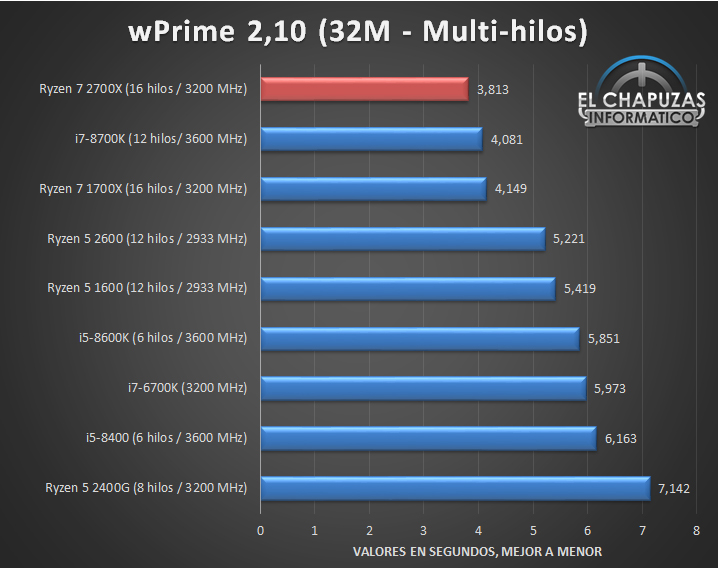 Memory Channels Memory Channels |
2 | 4 |
| Max. Memory Bandwidth | 41.6 GB/s | 79.47 GB/s |
| ECC Support | No | Yes |
| Official site | Intel Core i7 8700K official page | AMD Ryzen Threadripper 1920X official page |
| PCI Express Version | 3.0 | 3.0 |
| PCI Express Lanes | 16 | 60 |
| Extended instructions | SSE4.1, SSE4.2, AVX-2 | — |
Cast your vote
Choose between two processors
Core i7 8700K
0 (0%)
Ryzen Threadripper 1920X
1 (100%)
Total votes: 1
ompetitors
1.
Intel Core i7 8700K and AMD Ryzen 5 5600X
2.
Intel Core i7 8700K and Intel Core i9 12900K
3.
Intel Core i7 8700K and Intel Core i7 12700K
4.
Intel Core i7 8700K and Intel Core i5 12600K
5.
Intel Core i7 8700K and Intel Core i5 12400F
6.
AMD Ryzen Threadripper 1920X and AMD Ryzen 7 3700X
So which CPU will you choose: AMD Ryzen Threadripper 1920X or Intel Core i7 8700K?
Name
Message
Promotion
AMD Ryzen Threadripper 1920X vs. Intel Core i7-8700K
AMD Ryzen Threadripper 1920X
The AMD Ryzen Threadripper 1920X operates with 12 cores and 24 CPU threads. It run at 4.00 GHz base 3.60 GHz all cores while the TDP is set at 180 W.The processor is attached to the TR4 (SP3r2) CPU socket. This version includes 32.00 MB of L3 cache on one chip, supports 4 memory channels to support DDR4-2666 RAM and features 3. 0 PCIe Gen 64 lanes. Tjunction keeps below — degrees C. In particular, Whitehaven (Zen) Architecture is enhanced with 14 nm technology and supports AMD-V, SVM. The product was launched on Q3/2017
0 PCIe Gen 64 lanes. Tjunction keeps below — degrees C. In particular, Whitehaven (Zen) Architecture is enhanced with 14 nm technology and supports AMD-V, SVM. The product was launched on Q3/2017
Intel Core i7-8700K
The Intel Core i7-8700K operates with 6 cores and 24 CPU threads. It run at 4.70 GHz base 4.30 GHz all cores while the TDP is set at 95 W.The processor is attached to the LGA 1151-2 CPU socket. This version includes 12.00 MB of L3 cache on one chip, supports 2 memory channels to support DDR4-2666 RAM and features 3.0 PCIe Gen 16 lanes. Tjunction keeps below — degrees C. In particular, Coffee Lake S Architecture is enhanced with 14 nm technology and supports VT-x, VT-x EPT, VT-d. The product was launched on Q4/2017
AMD Ryzen Threadripper 1920X
Intel Core i7-8700K
Compare Detail
| 3.50 GHz | Frequency | 3.70 GHz |
| 12 | Cores | 6 |
4.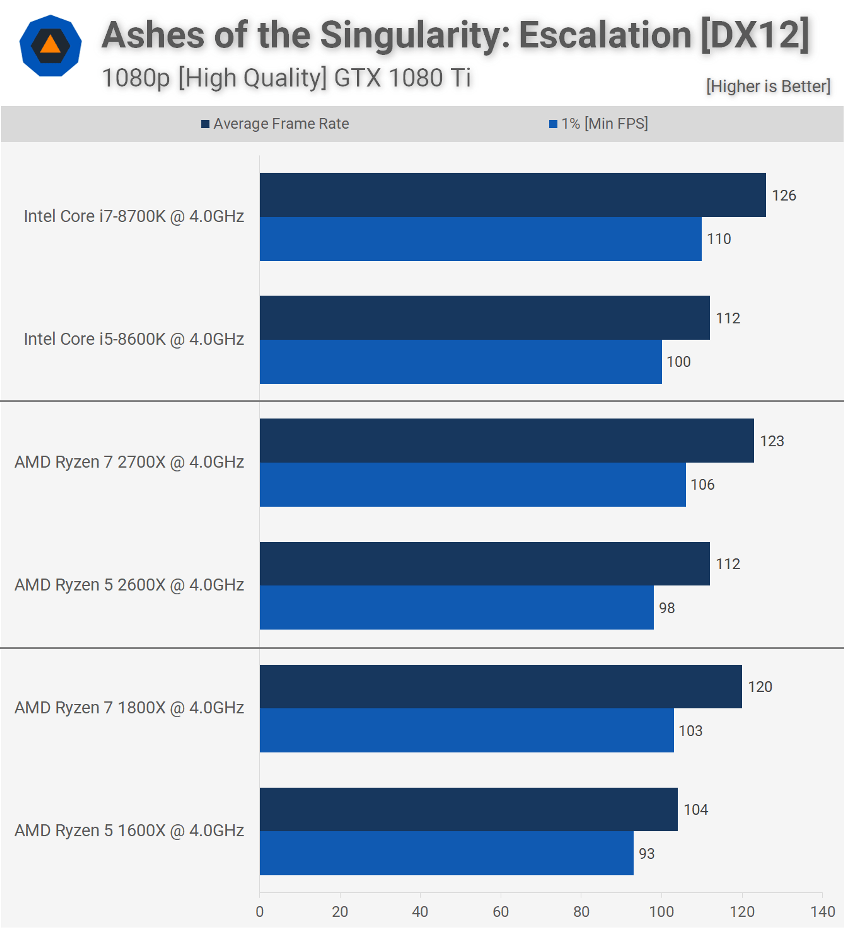 00 GHz 00 GHz |
Turbo (1 Core) | 4.70 GHz |
| 3.60 GHz | Turbo (All Cores) | 4.30 GHz |
| Yes | Hyperthreading | Yes |
| Yes | Overclocking | Yes |
| normal | Core Architecture | normal |
| no iGPU | GPU |
Intel UHD Graphics 630 |
| No turbo | GPU (Turbo) | 1.20 GHz |
| 14 nm | Technology | 14 nm |
| No turbo | GPU (Turbo) | 1.20 GHz |
| DirectX Version | 12 | |
| Max. displays | 3 | |
| DDR4-2666 | Memory | DDR4-2666 |
| 4 | Memory channels | 2 |
| Max memory | ||
| Yes | ECC | No |
| — | L2 Cache | — |
| 32.00 MB | L3 Cache | 12.00 MB |
3.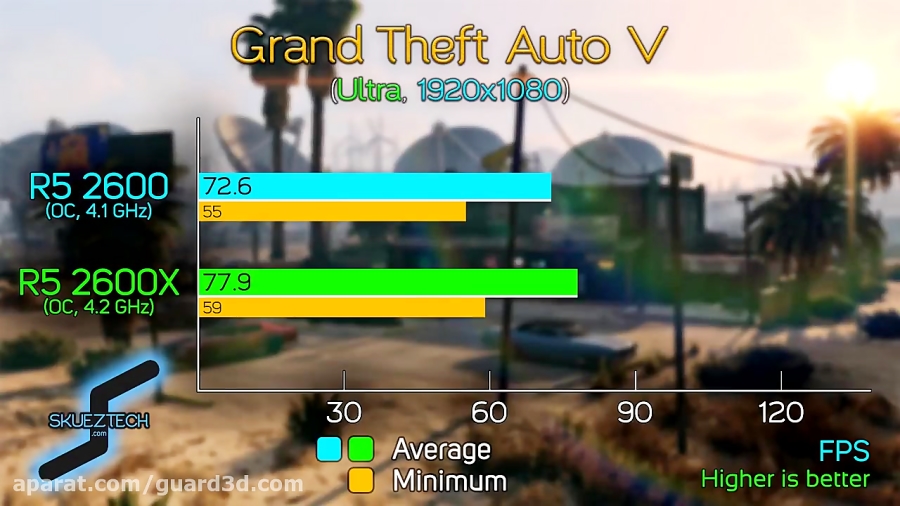 0 0 |
PCIe version | 3.0 |
| 64 | PCIe lanes | 16 |
| 14 nm | Technology | 14 nm |
| TR4 (SP3r2) | Socket | LGA 1151-2 |
| 180 W | TDP | 95 W |
| AMD-V, SVM | Virtualization | VT-x, VT-x EPT, VT-d |
| Q3/2017 | Release date | Q4/2017 |
|
Show more data |
Show more data |
Cinebench R23 (Single-Core)
Cinebench R23 is the successor of Cinebench R20 and is also based on the Cinema 4 Suite. Cinema 4 is a worldwide used software to create 3D forms. The single-core test only uses one CPU core, the amount of cores or hyperthreading ability doesn’t count.
Cinebench R23 (Multi-Core)
Cinebench R23 is the successor of Cinebench R20 and is also based on the Cinema 4 Suite. Cinema 4 is a worldwide used software to create 3D forms. The multi-core test involves all CPU cores and taks a big advantage of hyperthreading.
Cinebench R20 (Single-Core)
Cinebench R20 is the successor of Cinebench R15 and is also based on the Cinema 4 Suite. Cinema 4 is a worldwide used software to create 3D forms. The single-core test only uses one CPU core, the amount of cores or hyperthreading ability doesn’t count.
Cinebench R20 (Multi-Core)
Cinebench R20 is the successor of Cinebench R15 and is also based on the Cinema 4 Suite. Cinema 4 is a worldwide used software to create 3D forms. The multi-core test involves all CPU cores and taks a big advantage of hyperthreading.
Cinebench R15 (Single-Core)
Cinebench R15 is the successor of Cinebench 11.5 and is also based on the Cinema 4 Suite. Cinema 4 is a worldwide used software to create 3D forms. The single-core test only uses one CPU core, the amount of cores or hyperthreading ability doesn’t count.
Cinebench R15 (Multi-Core)
Cinebench R15 is the successor of Cinebench 11.5 and is also based on the Cinema 4 Suite. Cinema 4 is a worldwide used software to create 3D forms. The multi-core test involves all CPU cores and taks a big advantage of hyperthreading.
The multi-core test involves all CPU cores and taks a big advantage of hyperthreading.
Geekbench 5, 64bit (Single-Core)
Geekbench 5 is a cross plattform benchmark that heavily uses the systems memory. A fast memory will push the result a lot. The single-core test only uses one CPU core, the amount of cores or hyperthreading ability doesn’t count.
Geekbench 5, 64bit (Multi-Core)
Geekbench 5 is a cross plattform benchmark that heavily uses the systems memory. A fast memory will push the result a lot. The multi-core test involves all CPU cores and taks a big advantage of hyperthreading.
iGPU — FP32 Performance (Single-precision GFLOPS)
The theoretical computing performance of the internal graphics unit of the processor with simple accuracy (32 bit) in GFLOPS. GFLOPS indicates how many billion floating point operations the iGPU can perform per second.
Blender 2.81 (bmw27)
Blender is a free 3D graphics software for rendering (creating) 3D bodies, which can also be textured and animated in the software.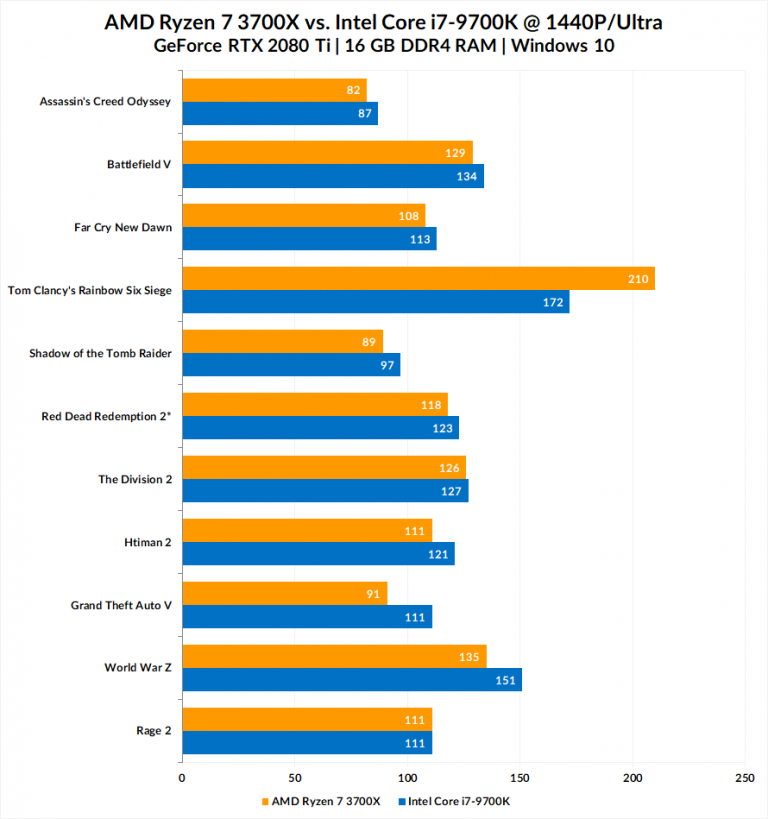 The Blender benchmark creates predefined scenes and measures the time (s) required for the entire scene. The shorter the time required, the better. We selected bmw27 as the benchmark scene.
The Blender benchmark creates predefined scenes and measures the time (s) required for the entire scene. The shorter the time required, the better. We selected bmw27 as the benchmark scene.
Geekbench 3, 64bit (Single-Core)
Geekbench 3 is a cross plattform benchmark that heavily uses the systems memory. A fast memory will push the result a lot. The single-core test only uses one CPU core, the amount of cores or hyperthreading ability doesn’t count.
Geekbench 3, 64bit (Multi-Core)
Geekbench 3 is a cross plattform benchmark that heavily uses the systems memory. A fast memory will push the result a lot. The multi-core test involves all CPU cores and taks a big advantage of hyperthreading.
Cinebench R11.5, 64bit (Single-Core)
Cinebench 11.5 is based on the Cinema 4D Suite, a software that is popular to generate forms and other stuff in 3D. The single-core test only uses one CPU core, the amount of cores or hyperthreading ability doesn’t count.
Cinebench R11.
 5, 64bit (Multi-Core)
5, 64bit (Multi-Core)
Cinebench 11.5 is based on the Cinema 4D Suite, a software that is popular to generate forms and other stuff in 3D. The multi-core test involves all CPU cores and taks a big advantage of hyperthreading.
Cinebench R11.5, 64bit (iGPU, OpenGL)
Cinebench 11.5 is based on the Cinema 4D Suite, a software that is popular to generate forms and other stuff in 3D. The iGPU test uses the CPU internal graphic unit to execute OpenGL commands.
Estimated results for PassMark CPU Mark
Some of the CPUs listed below have been benchmarked by CPU-Comparison. However the majority of CPUs have not been tested and the results have been estimated by a CPU-Comparison’s secret proprietary formula. As such they do not accurately reflect the actual Passmark CPU mark values and are not endorsed by PassMark Software Pty Ltd.
Monero Hashrate kH/s
The crypto currency Monero has been using the RandomX algorithm since November 2019. This PoW (proof of work) algorithm can only efficiently be calculated using a processor (CPU) or a graphics card (GPU). The CryptoNight algorithm was used for Monero until November 2019, but it could be calculated using ASICs. RandomX benefits from a high number of CPU cores, cache and a fast connection of the memory via as many memory channels as possible
The CryptoNight algorithm was used for Monero until November 2019, but it could be calculated using ASICs. RandomX benefits from a high number of CPU cores, cache and a fast connection of the memory via as many memory channels as possible
Electric Usage Estimate
Average hours of use per day
Average CPU Utilization (0-100%)
Power cost, dollar per kWh
Electric Usage Estimate
Average hours of use per day
Average CPU Utilization (0-100%)
Power cost, dollar per kWh
Popular Comparision
Comments
AMD Ryzen Threadripper 1920X vs Intel Core i7-8700K
Comparative analysis of AMD Ryzen Threadripper 1920X and Intel Core i7-8700K processors for all known characteristics in the following categories: Essentials, Performance, Memory, Compatibility, Peripherals, Advanced Technologies, Virtualization, Graphics, Graphics interfaces, Graphics image quality, Graphics API support, Security & Reliability.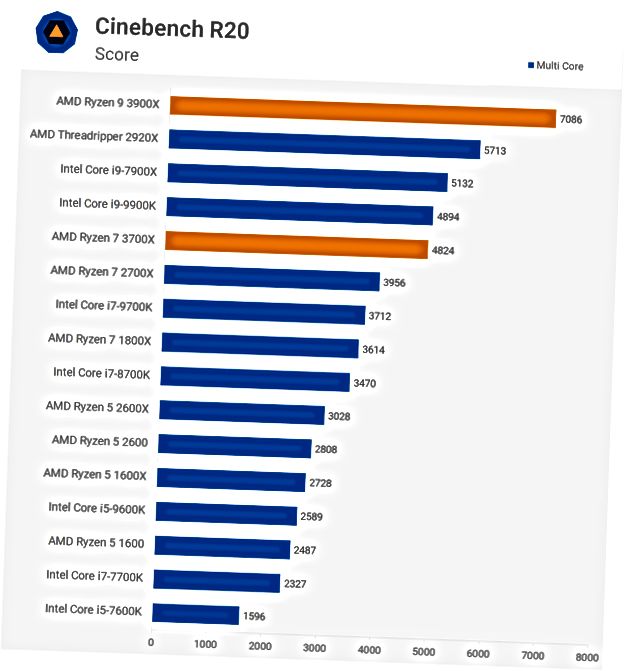
Benchmark processor performance analysis: PassMark — Single thread mark, PassMark — CPU mark, Geekbench 4 — Single Core, Geekbench 4 — Multi-Core, 3DMark Fire Strike — Physics Score, CompuBench 1.5 Desktop — Face Detection (mPixels/s), CompuBench 1.5 Desktop — Ocean Surface Simulation (Frames/s), CompuBench 1.5 Desktop — T-Rex (Frames/s), CompuBench 1.5 Desktop — Video Composition (Frames/s), CompuBench 1.5 Desktop — Bitcoin Mining (mHash/s), GFXBench 4.0 — Car Chase Offscreen (Frames), GFXBench 4.0 — Manhattan (Frames), GFXBench 4.0 — T-Rex (Frames), GFXBench 4.0 — Car Chase Offscreen (Fps), GFXBench 4.0 — Manhattan (Fps), GFXBench 4.0 — T-Rex (Fps).
AMD Ryzen Threadripper 1920X
Buy on Amazon
vs
Intel Core i7-8700K
Buy on Amazon
Differences
Reasons to consider the AMD Ryzen Threadripper 1920X
- CPU is newer: launch date 6 month(s) later
- 6 more cores, run more applications at once: 12 vs 6
- 12 more threads: 24 vs 12
- 4.
 5x more L1 cache, more data can be stored in the L1 cache for quick access later
5x more L1 cache, more data can be stored in the L1 cache for quick access later - 6x more L2 cache, more data can be stored in the L2 cache for quick access later
- 2.7x more L3 cache, more data can be stored in the L3 cache for quick access later
- Around 65% better performance in PassMark — CPU mark: 22773 vs 13795
- Around 26% better performance in Geekbench 4 — Multi-Core: 8440 vs 6678
- Around 9% better performance in 3DMark Fire Strike — Physics Score: 8387 vs 7702
| Launch date | 31 July 2017 vs 5 January 2017 |
| Number of cores | 12 vs 6 |
| Number of threads | 24 vs 12 |
| L1 cache | 1152 KB vs 256 KB |
| L2 cache | 6 MB vs 1 MB |
| L3 cache | 32 MB vs 12288 KB |
| PassMark — CPU mark | 22773 vs 13795 |
| Geekbench 4 — Multi-Core | 8440 vs 6678 |
| 3DMark Fire Strike — Physics Score | 8387 vs 7702 |
Reasons to consider the Intel Core i7-8700K
- Around 18% higher clock speed: 4.
 70 GHz vs 4 GHz
70 GHz vs 4 GHz - Around 47% higher maximum core temperature: 100°C vs 68°C
- Around 89% lower typical power consumption: 95 Watt vs 180 Watt
- Around 20% better performance in PassMark — Single thread mark: 2755 vs 2302
- Around 30% better performance in Geekbench 4 — Single Core: 1276 vs 983
| Maximum frequency | 4.70 GHz vs 4 GHz |
| Maximum core temperature | 100°C vs 68°C |
| Thermal Design Power (TDP) | 95 Watt vs 180 Watt |
| PassMark — Single thread mark | 2755 vs 2302 |
| Geekbench 4 — Single Core | 1276 vs 983 |
Compare benchmarks
CPU 1: AMD Ryzen Threadripper 1920X
CPU 2: Intel Core i7-8700K
| PassMark — Single thread mark |
|
|
||
| PassMark — CPU mark |
|
|
||
| Geekbench 4 — Single Core |
|
|
||
| Geekbench 4 — Multi-Core |
|
|
||
| 3DMark Fire Strike — Physics Score |
|
|
| Name | AMD Ryzen Threadripper 1920X | Intel Core i7-8700K |
|---|---|---|
| PassMark — Single thread mark | 2302 | 2755 |
| PassMark — CPU mark | 22773 | 13795 |
| Geekbench 4 — Single Core | 983 | 1276 |
| Geekbench 4 — Multi-Core | 8440 | 6678 |
| 3DMark Fire Strike — Physics Score | 8387 | 7702 |
CompuBench 1. 5 Desktop — Face Detection (mPixels/s) 5 Desktop — Face Detection (mPixels/s) |
9.279 | |
| CompuBench 1.5 Desktop — Ocean Surface Simulation (Frames/s) | 88.131 | |
| CompuBench 1.5 Desktop — T-Rex (Frames/s) | 1.084 | |
| CompuBench 1.5 Desktop — Video Composition (Frames/s) | 4.763 | |
| CompuBench 1.5 Desktop — Bitcoin Mining (mHash/s) | 12.047 | |
| GFXBench 4.0 — Car Chase Offscreen (Frames) | 2083 | |
GFXBench 4. 0 — Manhattan (Frames) 0 — Manhattan (Frames) |
4305 | |
| GFXBench 4.0 — T-Rex (Frames) | 7198 | |
| GFXBench 4.0 — Car Chase Offscreen (Fps) | 2083 | |
| GFXBench 4.0 — Manhattan (Fps) | 4305 | |
| GFXBench 4.0 — T-Rex (Fps) | 7198 |
Compare specifications (specs)
| AMD Ryzen Threadripper 1920X | Intel Core i7-8700K | |
|---|---|---|
| Architecture codename | Zen | Coffee Lake |
| Family | AMD Ryzen Processors | |
| Launch date | 31 July 2017 | 5 January 2017 |
| Launch price (MSRP) | $800 | $420 |
| OPN PIB | YD192XA8AEWOF | |
| OPN Tray | YD192XA8UC9AE | |
| OS Support | Windows 10 — 64-Bit Edition, RHEL x86 64-Bit, Ubuntu x86 64-Bit | |
| Place in performance rating | 495 | 496 |
| Price now | $419. 95 95 |
$358.99 |
| Series | AMD Ryzen Threadripper Processors | 8th Generation Intel® Core™ i7 Processors |
| Value for money (0-100) | 13.14 | 13.10 |
| Vertical segment | Desktop | Desktop |
| Processor Number | i7-8700K | |
| Status | Launched | |
| 64 bit support | ||
| Base frequency | 3. 5 GHz 5 GHz |
3.70 GHz |
| Die size | 213 mm | |
| L1 cache | 1152 KB | 256 KB |
| L2 cache | 6 MB | 1 MB |
| L3 cache | 32 MB | 12288 KB |
| Manufacturing process technology | 14 nm | 14 nm |
| Maximum core temperature | 68°C | 100°C |
| Maximum frequency | 4 GHz | 4. 70 GHz 70 GHz |
| Number of cores | 12 | 6 |
| Number of threads | 24 | 12 |
| Transistor count | 9600 million | |
| Unlocked | ||
| Bus Speed | 8 GT/s DMI3 | |
| Maximum case temperature (TCase) | 72 °C | |
| Max memory channels | 4 | 2 |
| Supported memory frequency | 2667 MHz | |
| Supported memory types | DDR4 | DDR4-2666 |
| Maximum memory bandwidth | 41. 6 GB/s 6 GB/s |
|
| Maximum memory size | 128 GB | |
| Max number of CPUs in a configuration | 1 | 1 |
| Sockets supported | sTR4 | FCLGA1151 |
| Thermal Design Power (TDP) | 180 Watt | 95 Watt |
| Thermal Solution | Not included | PCG 2015D (130W) |
| Low Halogen Options Available | ||
| Package Size | 37.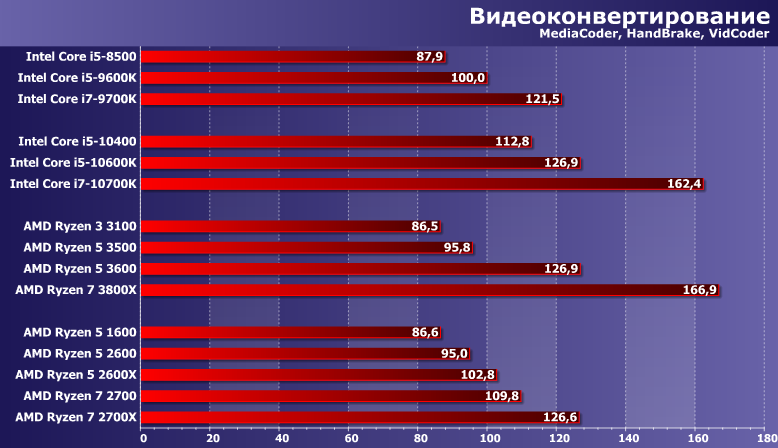 5mm x 37.5mm 5mm x 37.5mm |
|
| PCI Express revision | 3.0 | 3.0 |
| Max number of PCIe lanes | 16 | |
| PCIe configurations | Up to 1×16, 2×8, 1×8+2×4 | |
| Scalability | 1S Only | |
| AMD Ryzen VR-Ready Premium | ||
| AMD SenseMI | ||
| Enmotus FuzeDrive | ||
| Fused Multiply-Add 3 (FMA3) | ||
| Intel® Advanced Vector Extensions 2 (AVX2) | ||
| Intel® AES New Instructions | ||
| The «Zen» Core Architecture | ||
| Enhanced Intel SpeedStep® technology | ||
| Idle States | ||
| Instruction set extensions | Intel® SSE4.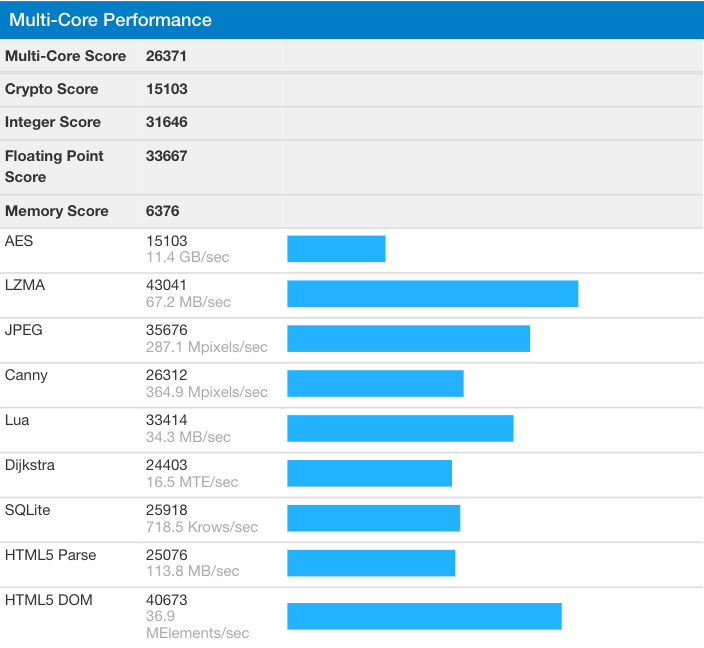 1, Intel® SSE4.2, Intel® AVX2 1, Intel® SSE4.2, Intel® AVX2 |
|
| Intel 64 | ||
| Intel® Advanced Vector Extensions (AVX) | ||
| Intel® Hyper-Threading technology | ||
| Intel® Optane™ Memory Supported | ||
| Intel® Stable Image Platform Program (SIPP) | ||
| Intel® TSX-NI | ||
| Intel® Turbo Boost technology | ||
| Intel® vPro™ Platform Eligibility | ||
| Thermal Monitoring | ||
| AMD Virtualization (AMD-V™) | ||
| Intel® Virtualization Technology (VT-x) | ||
| Intel® Virtualization Technology for Directed I/O (VT-d) | ||
| Intel® VT-x with Extended Page Tables (EPT) | ||
| Device ID | 0x3E92 | |
| Graphics base frequency | 350 MHz | |
| Graphics max dynamic frequency | 1.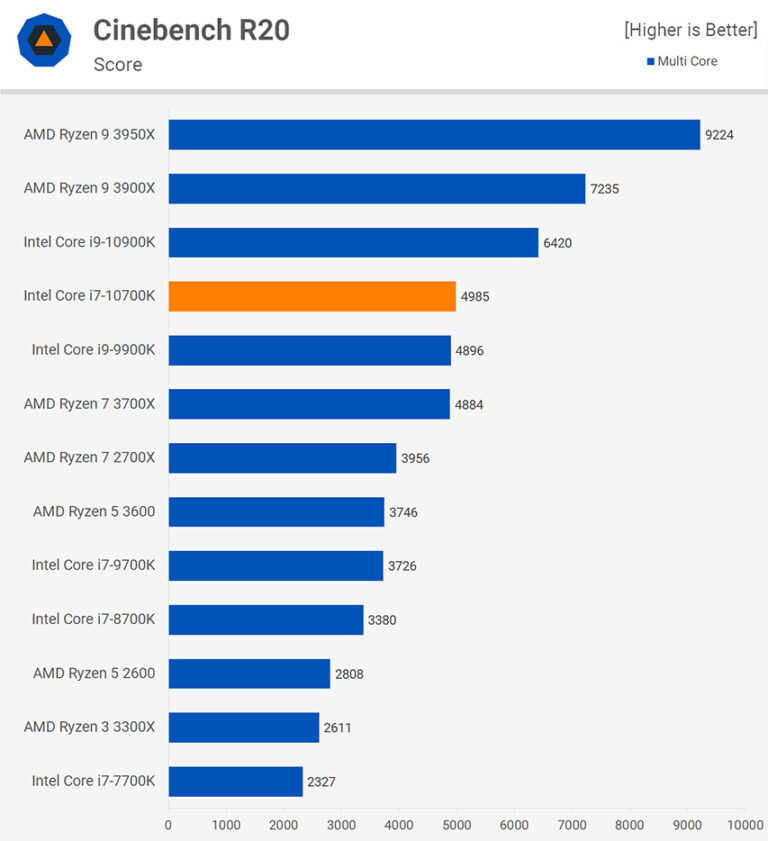 20 GHz 20 GHz |
|
| Intel® Clear Video HD technology | ||
| Intel® Clear Video technology | ||
| Intel® InTru™ 3D technology | ||
| Intel® Quick Sync Video | ||
| Max video memory | 64 GB | |
| Processor graphics | Intel® UHD Graphics 630 | |
| Number of displays supported | 3 | |
| 4K resolution support | ||
| Max resolution over DisplayPort | [email protected] | |
| Max resolution over eDP | [email protected] | |
Max resolution over HDMI 1. 4 4 |
[email protected] | |
| DirectX | 12 | |
| OpenGL | 4.5 | |
| Execute Disable Bit (EDB) | ||
| Intel® Identity Protection technology | ||
| Intel® Memory Protection Extensions (Intel® MPX) | ||
| Intel® OS Guard | ||
| Intel® Secure Key technology | ||
| Intel® Software Guard Extensions (Intel® SGX) | ||
| Intel® Trusted Execution technology (TXT) | ||
| Secure Boot |
Ryzen Threadripper 1920X vs i7-8700K — Call of Duty Modern Warfare with RX 580 Benchmarks 1080p, 1440p, Ultrawide, 4K Comparison
RX 580 with
AMD Ryzen Threadripper 1920X
Call of Duty Modern Warfare
RX 580 with
Intel Core i7-8700K @ 3. 70GHz
70GHz
Ryzen Threadripper 1920X
i7-8700K
Multi-Thread Performance
18511 Pts
15970 Pts
Single-Thread Performance
1995 Pts
2703 Pts
Call of Duty Modern Warfare
Ryzen Threadripper 1920X vs i7-8700K in Call of Duty Modern Warfare using RX 580 — CPU Performance comparison at Ultra, High, Medium, and Low Quality Settings with 1080p, 1440p, Ultrawide, 4K resolutions
Ryzen Threadripper 1920X
i7-8700K
Ultra Quality
| Resolution | Frames Per Second |
|---|---|
| 1080p |
72.8 FPS |
| 1080p |
84.0 FPS |
| 1440p |
52.4 FPS |
| 1440p |
58.6 FPS |
| 2160p |
31.3 FPS |
| 2160p |
35.0 FPS |
| w1440p |
44.8 FPS |
| w1440p |
50.1 FPS |
High Quality
| Resolution | Frames Per Second |
|---|---|
| 1080p |
120. |
| 1080p |
136.0 FPS |
| 1440p |
91.0 FPS |
| 1440p |
100.2 FPS |
| 2160p |
58.4 FPS |
| 2160p |
64.3 FPS |
| w1440p |
79.6 FPS |
| w1440p |
87.6 FPS |
Medium Quality
| Resolution | Frames Per Second |
|---|---|
| 1080p |
168.2 FPS |
| 1080p |
188.0 FPS |
| 1440p |
129.7 FPS |
| 1440p |
141.7 FPS |
| 2160p |
85.5 FPS |
| 2160p |
93.7 FPS |
| w1440p |
114.4 FPS |
| w1440p |
125.1 FPS |
Low Quality
| Resolution | Frames Per Second |
|---|---|
| 1080p |
263. |
| 1080p |
292.1 FPS |
| 1440p |
206.9 FPS |
| 1440p |
224.8 FPS |
| 2160p |
139.7 FPS |
| 2160p |
152.3 FPS |
| w1440p |
183.9 FPS |
| w1440p |
200.1 FPS |
Ryzen Threadripper 1920X
- The Ryzen Threadripper 1920X has higher Level 2 Cache. Data/instructions which have to be processed can be loaded from the fast L2 and the CPU does not have to wait for the very slow DDR RAM
- The Ryzen Threadripper 1920X has higher Level 3 Cache. This is useful when you have substantial multiprocessing workloads, many computationally intense simultaneous processes. More likely on a server, less on a personally used computer for interactive desktop workloads.
- The Ryzen Threadripper 1920X has more cores. The benefit of having more cores is that the system can handle more threads.
 Each core can handle a separate stream of data. This architecture greatly increases the performance of a system that is running concurrent applications.
Each core can handle a separate stream of data. This architecture greatly increases the performance of a system that is running concurrent applications. - The Ryzen Threadripper 1920X has more threads. Larger programs are divided into threads (small sections) so that the processor can execute them simultaneously to get faster execution.
i7-8700K
- For some games, a cpu with a higher clock speed, or in a technical name IPC (Instructions per clock), has better results than other CPU’s with higher core count and lower core speed.
- The i7-8700K is more power efficient and generates less heat.
- The i7-8700K has a higher turbo clock boost. Turbo Boost is a CPU feature that will run CPU clock speed faster than its base clock, if certain conditions are present. It will enable older software that runs on fewer cores, to perform better on newer hardware. Since games are software too, it is also applicable to them.
Compare Ryzen Threadripper 1920X vs i7-8700K specifications
Ryzen Threadripper 1920X vs i7-8700K Architecture
| Ryzen Threadripper 1920X | i7-8700K | |
|---|---|---|
| Codename | Zen | Coffee Lake |
| Generation | Ryzen Threadripper (Zen) |
Core i7 (Coffee Lake) |
| Market | Desktop | Desktop |
| Memory Support | DDR4 | DDR4 |
| Part# | YD192XA8UC9AE | SR3QR |
| Production Status | Active | Active |
| Released | Aug 2017 | Oct 2017 |
Ryzen Threadripper 1920X vs i7-8700K Cache
| Ryzen Threadripper 1920X | i7-8700K | |
|---|---|---|
| Cache L1 | 96K (per core) | 64K (per core) |
| Cache L2 | 512K (per core) | 256K (per core) |
| Cache L3 | 32MB | 12MB (shared) |
Ryzen Threadripper 1920X vs i7-8700K Cores
| Ryzen Threadripper 1920X | i7-8700K | |
|---|---|---|
| # of Cores | 12 | 6 |
| # of Threads | 24 | 12 |
| Integrated Graphics | N/A | UHD Graphics 630 |
| SMP # CPUs | 1 | 1 |
Ryzen Threadripper 1920X vs i7-8700K Features
| Ryzen Threadripper 1920X | i7-8700K | |
|---|---|---|
| MMX SSE SSE2 SSE3 SSSE3 SSE4A SSE4.  1 1SSE4.2 AES AVX AVX2 BMI1 BMI2 SHA F16C FMA3 AMD64 EVP AMD-V SMAP SMEP SMT Precision Boost XFR |
MMX SSE SSE2 SSE3 SSSE3 SSE4.2 AVX AVX2 EIST Intel 64 XD bit VT-x VT-d HTT AES-NI TSX TXT CLMUL FMA3 F16C BMI1 BMI2 Boost 2.0 |
Ryzen Threadripper 1920X vs i7-8700K Notes
| Ryzen Threadripper 1920X | i7-8700K | |
|---|---|---|
| This processor comes with an unlocked base clock multiplier, allowing users to set the multiplier value higher than shipped value, to facilitate better overclocking. | This processor comes with an unlocked BCLK multiplier, allowing users to set the multiplier value higher than shipped value, to facilitate better overclocking. |
Ryzen Threadripper 1920X vs i7-8700K Performance
| Ryzen Threadripper 1920X | i7-8700K | |
|---|---|---|
| Base Clock | 100 MHz | 100 MHz |
| Frequency | 3. 5 GHz 5 GHz |
3.7 GHz |
| Multiplier | 35.0x | 37.0x |
| Multiplier Unlocked | Yes | Yes |
| TDP | 180 W | 95 W |
| Turbo Clock | up to 4.2 GHz | up to 4.7 GHz |
| Voltage | variable | variable |
Ryzen Threadripper 1920X vs i7-8700K Physical
| Ryzen Threadripper 1920X | i7-8700K | |
|---|---|---|
| Die Size | 213 mm² | unknown |
| Foundry | GlobalFoundries | Intel |
| Package | FCLGA-4094 | FC-LGA1151 |
| Process Size | 14 nm | 14 nm |
| Socket | AMD Socket SP3r2 | Intel Socket 1151 |
| Transistors | 9600 million | unknown |
| tCaseMax | unknown | 72°C |
Share Your Comments 0
Compare Ryzen Threadripper 1920X vs i7-8700K in more games
Elden Ring
2022
God of War
2022
Overwatch 2
2022
Forza Horizon 5
2021
Halo Infinite
2021
Battlefield 2042
2021
Assassin’s Creed Valhalla
2020
Microsoft Flight Simulator
2020
Valorant
2020
Call of Duty: Black Ops Cold War
2020
Death Stranding
2020
Marvel’s Avengers
2020
Godfall
2020
Cyberpunk 2077
2020
Apex Legends
2019
Anthem
2019
Far Cry New Dawn
2019
Resident Evil 2
2019
Metro Exodus
2019
World War Z
2019
Gears of War 5
2019
F1 2019
2019
GreedFall
2019
Borderlands 3
2019
Call of Duty Modern Warfare
2019
Red Dead Redemption 2
2019
Need For Speed: Heat
2019
Assassin’s Creed Odyssey
2018
Battlefield V
2018
Call of Duty: Black Ops 4
2018
Final Fantasy XV
2018
Shadow of the Tomb Raider
2018
Forza Horizon 4
2018
Fallout 76
2018
Hitman 2
2018
Just Cause 4
2018
Monster Hunter: World
2018
Strange Brigade
2018
Assassin’s Creed Origins
2017
Dawn of War III
2017
Ghost Recon Wildlands
2017
Destiny 2
2017
PlayerUnknown’s Battlegrounds
2017
Fortnite Battle Royale
2017
Need For Speed: Payback
2017
For Honor
2017
Project CARS 2
2017
Forza Motorsport 7
2017
Ashes of the Singularity
2016
Ashes of the Singularity: Escalation
2016
Battlefield 1
2016
Deus Ex: Mankind Divided
2016
Doom
2016
F1 2016
2016
Hitman
2016
Rise of the Tomb Raider
2016
The Division
2016
Total War: Warhammer
2016
Overwatch
2016
Dishonored 2
2016
DiRT Rally
2015
Grand Theft Auto V
2015
The Witcher 3
2015
Rocket League
2015
Need For Speed
2015
Project CARS
2015
Rainbow Six Siege
2015
Battlefield 4
2013
Crysis 3
2013
Counter-Strike: Global Offensive
2012
League of Legends
2009
Minecraft
2009
AMD Ryzen Threadripper 1920X vs.
 Intel Core i7-8700K
Intel Core i7-8700K
Cpu Benchmark with benchmarks
| AMD Ryzen Threadripper 1920X | Intel Core i7-8700K | |
| 3.50 GHz | Frequency | 3.70 GHz |
| 4.00 GHz | Turbo (1 Core) | 4.70 GHz |
| 3.60 GHz | Turbo (All Cores) | 4.30 GHz |
| 12 | Cores | 6 |
| Yes | Hyperthreading ? | Yes |
| Yes | Overclocking ? | Yes |
| normal | Core architecture | normal |
| no iGPU | GPU | Intel UHD Graphics 630 |
| DirectX Version | 12 | |
| Max. displays | 3 | |
| DDR4-2666 | Memory | DDR4-2666 |
| 4 | Memory channels | 2 |
| Max. Memory | ||
| Yes | ECC | No |
| — | L2 Cache | — |
32. 00 MB 00 MB |
L3 Cache | 12.00 MB |
| 3.0 | PCIe version | 3.0 |
| 64 | PCIe lanes | 16 |
| 14 nm | Technology | 14 nm |
| TR4 (SP3r2) | Socket | LGA 1151-2 |
| 180 W | TDP | 95 W |
| AMD-V, SVM | Virtualization | VT-x, VT-x EPT, VT-d |
| Q3/2017 | Release date | Q4/2017 |
| show more detail | show more detail |
Cinebench R23 (Single-Core)
Cinebench R23 is the successor of Cinebench R20 and is also based on the Cinema 4 Suite. Cinema 4 is a worldwide used software to create 3D forms. The single-core test only uses one CPU core, the amount of cores or hyperthreading ability doesn’t count.
Cinebench R23 (Multi-Core)
Cinebench R23 is the successor of Cinebench R20 and is also based on the Cinema 4 Suite. Cinema 4 is a worldwide used software to create 3D forms. The multi-core test involves all CPU cores and taks a big advantage of hyperthreading.
The multi-core test involves all CPU cores and taks a big advantage of hyperthreading.
Cinebench R20 (Single-Core)
Cinebench R20 is the successor of Cinebench R15 and is also based on the Cinema 4 Suite. Cinema 4 is a worldwide used software to create 3D forms. The single-core test only uses one CPU core, the amount of cores or hyperthreading ability doesn’t count.
Cinebench R20 (Multi-Core)
Cinebench R20 is the successor of Cinebench R15 and is also based on the Cinema 4 Suite. Cinema 4 is a worldwide used software to create 3D forms. The multi-core test involves all CPU cores and taks a big advantage of hyperthreading.
Cinebench R15 (Single-Core)
Cinebench R15 is the successor of Cinebench 11.5 and is also based on the Cinema 4 Suite. Cinema 4 is a worldwide used software to create 3D forms. The single-core test only uses one CPU core, the amount of cores or hyperthreading ability doesn’t count.
Cinebench R15 (Multi-Core)
Cinebench R15 is the successor of Cinebench 11. 5 and is also based on the Cinema 4 Suite. Cinema 4 is a worldwide used software to create 3D forms. The multi-core test involves all CPU cores and taks a big advantage of hyperthreading.
5 and is also based on the Cinema 4 Suite. Cinema 4 is a worldwide used software to create 3D forms. The multi-core test involves all CPU cores and taks a big advantage of hyperthreading.
Geekbench 5, 64bit (Single-Core)
Geekbench 5 is a cross plattform benchmark that heavily uses the systems memory. A fast memory will push the result a lot. The single-core test only uses one CPU core, the amount of cores or hyperthreading ability doesn’t count.
Geekbench 5, 64bit (Multi-Core)
Geekbench 5 is a cross plattform benchmark that heavily uses the systems memory. A fast memory will push the result a lot. The multi-core test involves all CPU cores and taks a big advantage of hyperthreading.
iGPU — FP32 Performance (Single-precision GFLOPS)
The theoretical computing performance of the internal graphics unit of the processor with simple accuracy (32 bit) in GFLOPS. GFLOPS indicates how many billion floating point operations the iGPU can perform per second.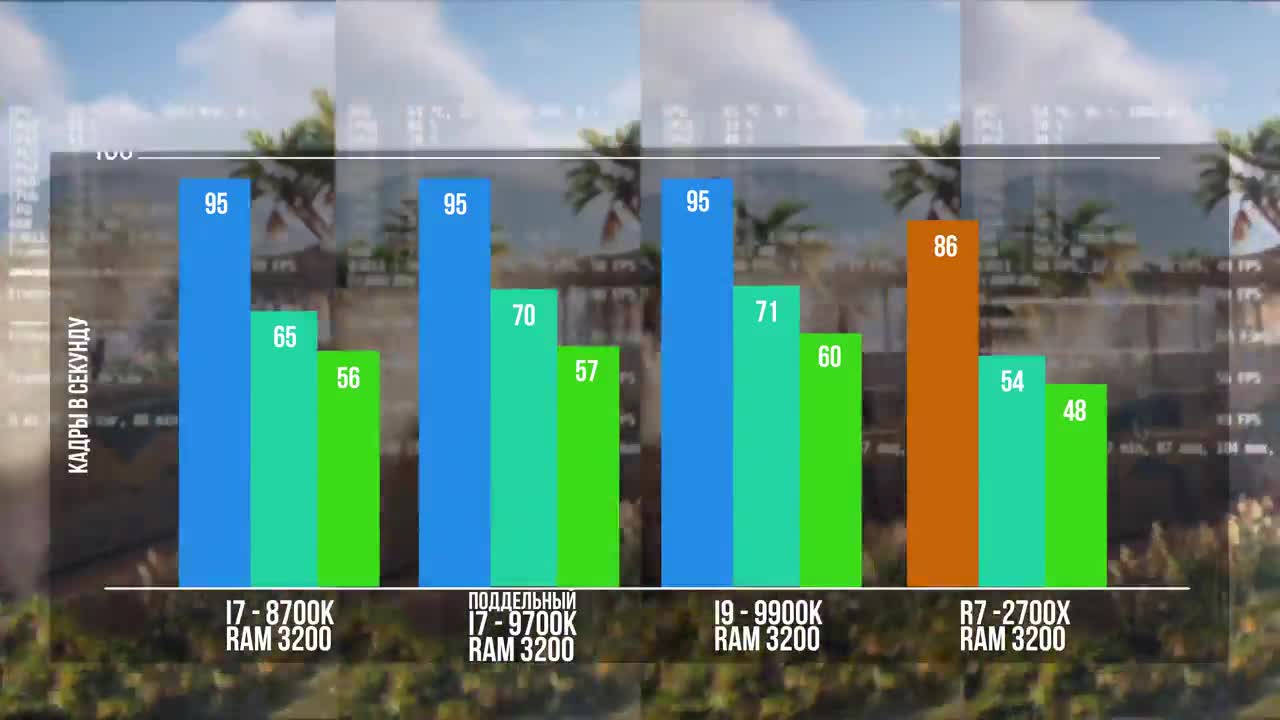
Blender 2.81 (bmw27)
Blender is a free 3D graphics software for rendering (creating) 3D bodies, which can also be textured and animated in the software. The Blender benchmark creates predefined scenes and measures the time (s) required for the entire scene. The shorter the time required, the better. We selected bmw27 as the benchmark scene.
Geekbench 3, 64bit (Single-Core)
Geekbench 3 is a cross plattform benchmark that heavily uses the systems memory. A fast memory will push the result a lot. The single-core test only uses one CPU core, the amount of cores or hyperthreading ability doesn’t count.
Geekbench 3, 64bit (Multi-Core)
Geekbench 3 is a cross plattform benchmark that heavily uses the systems memory. A fast memory will push the result a lot. The multi-core test involves all CPU cores and taks a big advantage of hyperthreading.
Cinebench R11.5, 64bit (Single-Core)
Cinebench 11.5 is based on the Cinema 4D Suite, a software that is popular to generate forms and other stuff in 3D. The single-core test only uses one CPU core, the amount of cores or hyperthreading ability doesn’t count.
The single-core test only uses one CPU core, the amount of cores or hyperthreading ability doesn’t count.
Cinebench R11.5, 64bit (Multi-Core)
Cinebench 11.5 is based on the Cinema 4D Suite, a software that is popular to generate forms and other stuff in 3D. The multi-core test involves all CPU cores and taks a big advantage of hyperthreading.
Cinebench R11.5, 64bit (iGPU, OpenGL)
Cinebench 11.5 is based on the Cinema 4D Suite, a software that is popular to generate forms and other stuff in 3D. The iGPU test uses the CPU internal graphic unit to execute OpenGL commands.
Estimated results for PassMark CPU Mark
Some of the CPUs listed below have been benchmarked by CPU-Benchmark. However the majority of CPUs have not been tested and the results have been estimated by a CPU-Benchmark’s secret proprietary formula. As such they do not accurately reflect the actual Passmark CPU mark values and are not endorsed by PassMark Software Pty Ltd.
Monero Hashrate kH/s
The crypto currency Monero has been using the RandomX algorithm since November 2019.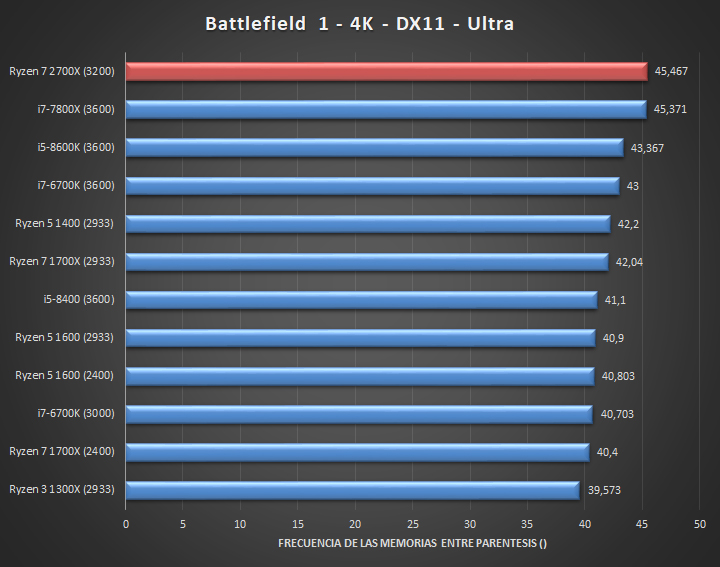 This PoW (proof of work) algorithm can only efficiently be calculated using a processor (CPU) or a graphics card (GPU). The CryptoNight algorithm was used for Monero until November 2019, but it could be calculated using ASICs. RandomX benefits from a high number of CPU cores, cache and a fast connection of the memory via as many memory channels as possible
This PoW (proof of work) algorithm can only efficiently be calculated using a processor (CPU) or a graphics card (GPU). The CryptoNight algorithm was used for Monero until November 2019, but it could be calculated using ASICs. RandomX benefits from a high number of CPU cores, cache and a fast connection of the memory via as many memory channels as possible
Popular Comparision
AMD Ryzen Threadripper 1920X vs. Intel Core i7-8700K — Cpu Benchmark Specs & Test
5 of 50 rating(s)
0024
24 vs 12
6MB vs 1.5MB
23061 vs 16270
32MB vs 12MB
1500KB vs 384KB
0.5MB/core vs 0.
 25MB/core
25MB/core 85.3GB/s vs 42.7GB/s
- 32°C higher than maximum operating temperature?
100°C vs 68°C - 0.7GHz higher turbo clock speed?
4.7GHz vs 4GHz - 85W below TDP?
95W vs 180W - Has integrated graphics?
- 18.92% higher PassMark score (single)?
2728 vs 2294
Which comparisons are the most popular?
AMD Ryzen Threadripper 1920X
vs
AMD Ryzen 7 5800X
Intel Core i7-8700K
vs
Intel Core i5-12400
AMD Ryzen Threadripper 1920X
vs
AMD Ryzen 9 5900X
Intel Core i7-8700K
vs
AMD Ryzen 5 5600X
AMD Ryzen Threadripper 1920X
vs
AMD Ryzen 5 5600X
Intel Core i7-8700K
vs
AMD Ryzen 5 5500U
AMD Ryzen Threadripper 1920X
vs
Intel Core i9-9900k
Intel Core i7-8700K
VS
Intel Core i7-9700k
AMD Ryzen Threadripper 1920x
AMD Ryzen 9 5950x
Intel Core Intel Core Intel Core. 0003
0003
vs
AMD Ryzen 5 5600G
AMD Ryzen Threadripper 1920X
vs
AMD Ryzen 5 3600
Intel Core i7-8700K
vs
AMD Ryzen 5 3600
AMD Ryzen Threadripper 1920X
vs
Intel Core i7-7700K
Intel Core i7-8700K
VS
Intel Core i5-9600k
AMD Ryzen Threadripper 1920x
Intel Core I7-5820000
0003
vs
AMD Ryzen 7 3700X
AMD Ryzen Threadripper 1920X
vs
AMD Ryzen 9 3900X
Intel Core i7-8700K
vs
Apple M1 Max
AMD Ryzen Threadripper 1920X
vs
AMD Ryzen 7 2700X
Intel Core i7-8700K
vs
Apple M1
Price Comparison
Cheaper
User Reviews
Threadripper
Overall Rating
320x
0 reviews of users
AMD Ryzen Threadripper 1920x
0.0 /10
0 Reviews of users
Intel Core i7-8700k 9000 Games0003
reviews yet not
10. 0 /10 9000
0 /10 9000
10.0 /10
1 Votes
Energy efficiency
reviews are not
10.0 /10
1 Votes
Production
Production
0019
1.CPU speed
12 x 3.5GHz
6 x 3.7GHz
CPU speed indicates how many processing cycles per second a processor can perform, considering all its cores (processors). It is calculated by adding the clock speeds of each core or, in the case of multi-core processors, each group of cores.
2nd processor thread
More threads result in better performance and better multitasking.
3.speed turbo clock
4.7GHz
When the processor is running below its limits, it can jump to a higher clock speed to increase performance.
4. Unlocked
✔AMD Ryzen Threadripper 1920X
✔Intel Core i7-8700K
Some processors come with an unlocked multiplier and are easier to overclock, allowing for better performance in games and other applications.
5.L2 cache
More L2 scratchpad memory results in faster results in CPU and system performance tuning.
6.L3 cache
More L3 scratchpad memory results in faster results in CPU and system performance tuning.
7.L1 cache
1500KB
More L1 scratchpad memory results in faster results in CPU and system performance tuning.
8.core L2
0.5MB/core
0.25MB/core
More data can be stored in L2 scratchpad for access by each processor core.
9.core L3
2.6MB/core
2MB/core
More data can be stored in the L3 scratchpad for access by each processor core.
Memory
1.RAM speed
2667MHz
2666MHz
Can support faster memory which speeds up system performance.
2. max memory bandwidth
max memory bandwidth
85.3GB/s
42.7GB/s
This is the maximum rate at which data can be read from or stored in memory.
3rd DDR memory version
Unknown. Help us offer a price. (AMD Ryzen Threadripper 1920X)
DDR (Double Data Rate Synchronous Dynamic Random Access Memory) is the most common type of main memory. New versions of DDR memory support higher maximum speeds and are more energy efficient.
4 memory channels
More memory channels increase the speed of data transfer between memory and processor.
5.max memory
Unknown. Help us offer a price. (AMD Ryzen Threadripper 1920X)
Maximum amount of memory (RAM).
6.bus baud rate
The bus is responsible for transferring data between different components of a computer or device.
7. Supports memory troubleshooting code
Supports memory troubleshooting code
✔AMD Ryzen Threadripper 1920X
✖Intel Core i7-8700K
Memory error recovery code can detect and repair data corruption. It is used when necessary to avoid distortion, such as in scientific computing or when starting a server.
8.eMMC version
Unknown. Help us offer a price. (AMD Ryzen Threadripper 1920X)
Unknown. Help us offer a price. (Intel Core i7-8700K)
A newer version of eMMC — Built-in Flash Memory Card — speeds up the memory interface, has a positive effect on device performance, for example, when transferring files from a computer to internal memory via USB.
9.bus frequency
Unknown. Help us offer a price. (AMD Ryzen Threadripper 1920X)
Unknown. Help us offer a price. (Intel Core i7-8700K)
The bus is responsible for transferring data between various components of a computer or device
Geotagging
1. PassMark result
PassMark result
This test measures processor performance using multi-threading.
2nd PassMark result (single)
This test measures processor performance using a thread of execution.
3.Geekbench 5 result (multi-core)
Unknown. Help us offer a price. (Intel Core i7-8700K)
Geekbench 5 is a cross-platform test that measures the performance of a multi-core processor. (Source: Primate Labs,2022)
4. Cinebench R20 result (multi-core)
Unknown. Help us offer a price. (AMD Ryzen Threadripper 1920X)
Unknown. Help us offer a price. (Intel Core i7-8700K)
Cinebench R20 is a benchmark that measures the performance of a multi-core processor by rendering a 3D scene.
5.Cinebench R20 result (single core)
Unknown. Help us offer a price. (AMD Ryzen Threadripper 1920X)
Unknown. Help us offer a price. (Intel Core i7-8700K)
Help us offer a price. (Intel Core i7-8700K)
Cinebench R20 is a test to evaluate the performance of a single core processor when rendering a 3D scene.
6.Geekbench 5 result (single core)
Unknown. Help us offer a price. (Intel Core i7-8700K)
Geekbench 5 is a cross-platform test that measures the single-core performance of a processor. (Source: Primate Labs, 2022)
7. Blender test result (bmw27)
Unknown. Help us offer a price. (AMD Ryzen Threadripper 1920X)
Unknown. Help us offer a price. (Intel Core i7-8700K)
Blender benchmark (bmw27) measures CPU performance by rendering a 3D scene. More powerful processors can render a scene in a shorter time.
8.Blender result (classroom)
Unknown. Help us offer a price. (AMD Ryzen Threadripper 1920X)
Unknown. Help us offer a price. (Intel Core i7-8700K)
The Blender (classroom) benchmark measures CPU performance by rendering a 3D scene.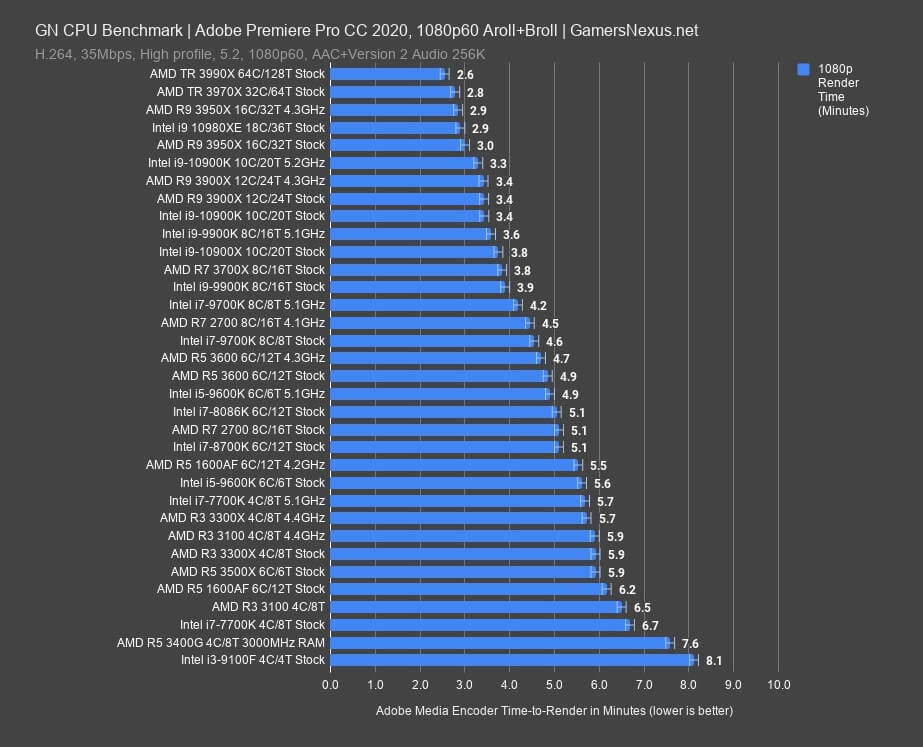 More powerful processors can render a scene in a shorter time.
More powerful processors can render a scene in a shorter time.
9.performance per watt
Unknown. Help us offer a price. (AMD Ryzen Threadripper 1920X)
Unknown. Help us offer a price. (Intel Core i7-8700K)
This means that the processor is more efficient, resulting in more performance per watt of power used.
Features
1.uses multithreading
✔AMD Ryzen Threadripper 1920X
✔Intel Core i7-8700K
Multithreading technology (such as Intel’s Hyperthreading or AMD’s Simultaneous Multithreading) provides better performance by dividing each physical processor core into logical cores, also known as threads. Thus, each core can run two instruction streams at the same time.
2.Has AES
✔AMD Ryzen Threadripper 1920X
✔Intel Core i7-8700K
AES is used to speed up encryption and decryption.
3.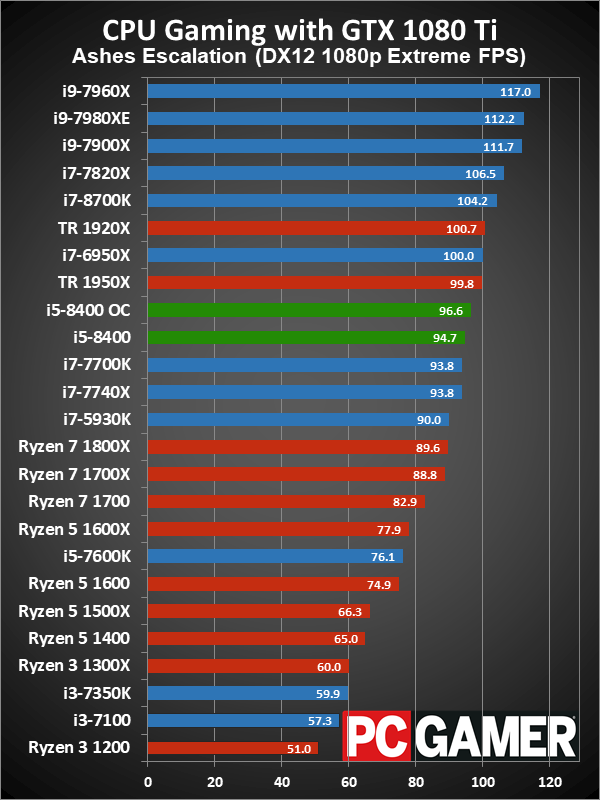 Has AVX
Has AVX
✔AMD Ryzen Threadripper 1920X
✔Intel Core i7-8700K
AVX is used to help speed up calculations in multimedia, scientific and financial applications, and to improve the performance of the Linux RAID program.
4.Version SSE
SSE is used to speed up multimedia tasks such as editing images or adjusting audio volume. Each new version contains new instructions and improvements.
5.Has F16C
✔AMD Ryzen Threadripper 1920X
✔Intel Core i7-8700K
F16C is used to speed up tasks such as image contrast adjustment or volume control.
6.bits transmitted at the same time
Unknown. Help us offer a price. (AMD Ryzen Threadripper 1920X)
Unknown. Help us offer a price. (Intel Core i7-8700K)
NEON provides faster media processing such as MP3 listening.
7. Has MMX
✔AMD Ryzen Threadripper 1920X
✔Intel Core i7-8700K
MMX is used to speed up tasks such as image contrast adjustment or volume control.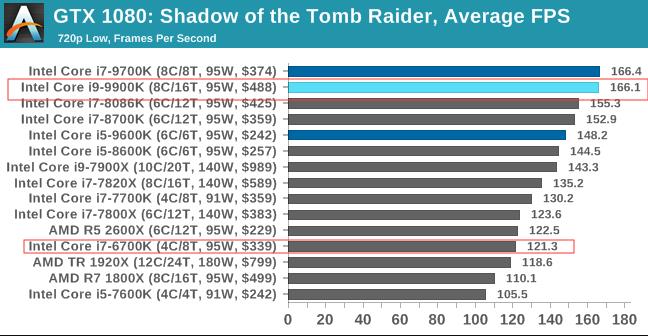
8.Has TrustZone
✖AMD Ryzen Threadripper 1920X
✖Intel Core i7-8700K
Technology is integrated into the processor to ensure device security when using features such as mobile payments and video streaming through Digital Rights Management (DRM) ).
9.interface width
Unknown. Help us offer a price. (AMD Ryzen Threadripper 1920X)
Unknown. Help us offer a price. (Intel Core i7-8700K)
The processor can decode more instructions per clock (IPC), which means the processor performs better
Price comparison
Cancel
Which CPUs are better?
Intel Core i7 8700K vs AMD Ryzen Threadripper 1920X:
performance comparison
VS
Intel Core i7 8700K
AMD Ryzen Threadripper 1920X
Which is better: 6-core Intel Core i7 8700K at 3.7 GHz or AMD Ryzen Threadripper 1920X with 12 cores at 3.5 GHz? To find out, read our comparison test of these 14nm desktop processors in popular benchmarks, games and heavy applications.
- Overview
- Differences
- Performance
- Features
- Comments
Overview
Overview and comparison of the main metrics from NanoReview
Single -flow performance
Rating in tests using one nucleus
Core i7 8700k
65
Ryzen Threadripper 1920x
53
Multi -Exercise
Tests 41
Ryzen Threadripper 1
Reasons to choose Intel Core i7 8700K
- 47% lower than Ryzen Threadripper 1920X peak power consumption — 95 vs 180 watts
- More than 32°C higher maximum operating temperature
- 32% faster in Geekbench v5 single-core test — 1242 and 939 points
- 18% higher frequency in Turbo Boost (4.7 GHz vs. 4 GHz)
- There is an integrated graphics accelerator Intel UHD Graphics 630
Reasons to choose AMD Ryzen Threadripper 1920X
- Supports up to 2048 GB DDR4-2666
- Has 20 MB more L3 cache
- Has 6 more physical cores
- Supports 4-channel memory
- 37.
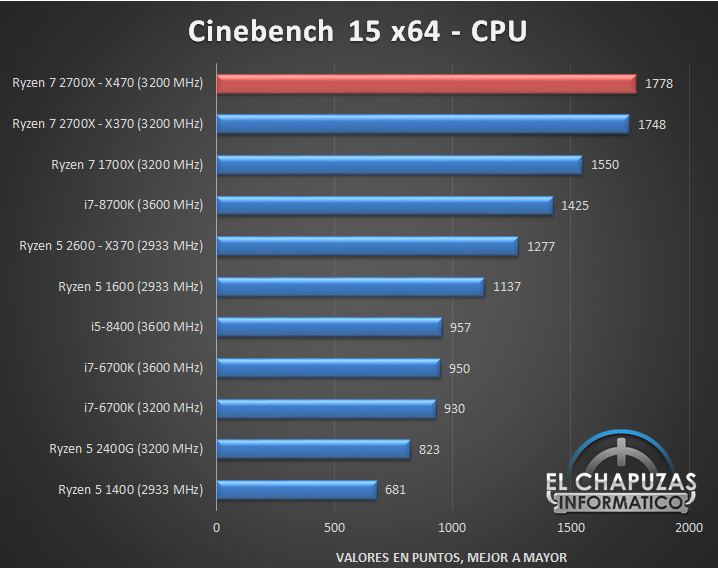 87 GB/s higher maximum memory bandwidth
87 GB/s higher maximum memory bandwidth
Benchmark tests
Compare the results of processor tests in benchmarks
Cinebench R23 (single core)
Core i7 8700K
+15%
1208 9Ryzen Threadripper 1920X
+69%
14931
Passmark CPU (single core)
Core i7 8700K
+20%
2755
Ryzen Threadripper 1920X
2291
+63%
22504
Geekbench 5 (single core)
Core i7 8700K
+33%
1237
Ryzen Threadripper 1920X
931
Geekbench 5 (multi-core)
Core i7 8700K
90 R004 900X Threadripper 900X 9003
10116
▶️ Add your score to Cinebench R23
Specifications
List of full technical specifications for Intel Core i7 8700K and AMD Ryzen Threadripper 1920X
General information
| Manufacturer | Intel | AMD |
| Release date | October 5, 2017 | August 10, 2017 |
| Type | Desktop | Desktop |
| Instruction set architecture | x86-64 | x86-64 |
| Codename | Coffee Lake | Zen |
| Model number | i7-8700K | — |
| Socket | LGA-1151 | sTR4 |
| Integrated graphics | UHD Graphics 630 | No |
Capacity
| Number of cores | 6 | 12 |
| Number of threads | 12 | 24 |
| Frequency | 3. 7 GHz 7 GHz |
3.5 GHz |
| Max. frequency in Turbo Boost | 4.7 GHz | 4 GHz |
| Bus frequency | 100 MHz | 100 MHz |
| Multiplier | 37x | 35x |
| Tire speed | 8 GT/s | — |
| Level 1 cache | 64KB (per core) | 96KB (per core) |
| Level 2 cache | 256KB (per core) | 512KB (per core) |
| Level 3 cache | 12MB (shared) | 32MB (shared) |
| Unlocked multiplier | Yes | Yes |
Power consumption
| Number of transistors | — | 9.6 billion |
| Process | 14 nanometers | 14 nanometers |
| Power consumption (TDP) | 95W | 180 W |
| Critical temperature | 100°C | 68°C |
| Integrated graphics | Intel UHD Graphics 630 | — |
| GPU frequency | 350 MHz | — |
| Boost GPU frequency | 1200 MHz | — |
| Shader blocks | 192 | — |
| TMUs | 24 | — |
| ROPs | 3 | — |
| Computer units | 24 | — |
| TGP | 15W | — |
Max.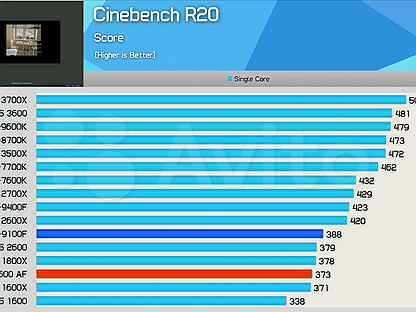 resolution resolution |
4096×2304 — 60Hz | — |
Igpu Flops
Core i7 8700k
0.38 Teraflops
Ryzen Threadripper 1920x
N/D
| DDR4-2666 | DDR4-2666 | |
| Max. size | 128 GB | 2048 GB |
| Number of channels | 2 | 4 |
| Max. bandwidth | 41.6 GB/s | 79.47 GB/s |
| ECC support | No | Yes |
Other
| Official site | Site Intel Core i7 8700K | AMD Ryzen Threadripper 1920X Site |
| PCI Express version | 3.0 | 3.0 |
| Max. PCI Express lanes | 16 | 60 |
| Extended instructions | SSE4.1, SSE4.2, AVX-2 | — |
Poll
What processor do you think is the best?
Core i7 8700K
0 (0%)
Ryzen Threadripper 1920X
1 (100%)
Total Votes: 1
Competitors
1.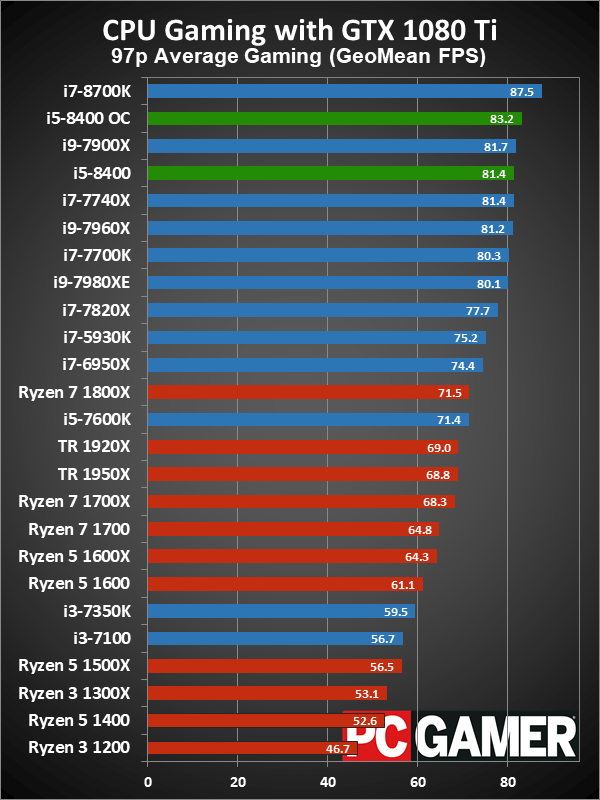
Intel Core i7 8700K vs AMD Ryzen 5 5600X
2.
Intel Core i7 8700K vs Intel Core i9 12900K
3.
Intel Core i7 8700K vs Intel Core i7 12700K
4.
Intel Core i7 8700K vs Intel Core i5 12600K
5.
Intel Core i7 8700K vs Intel Core i5 12400F
6.
AMD Ryzen Threadripper 1920X vs AMD Ryzen 7 3700X
What will you choose: AMD Ryzen Threadripper 1920X or Intel Core i7 8700K?
Name
Message
AMD Ryzen Threadripper 1920X vs. Intel Core i7-8700K
AMD Ryzen Threadripper 1920X
AMD Ryzen Threadripper 1920X runs at 12 and 24 CPU threads It runs at 4.00 GHz base 3.60 GHz all cores while the TDP is set to 180 W .The CPU connects to the CPU socket TR4 (SP3r2) This the version includes 32.00 MB of L3 cache on a single die, supports 4 to support DDR4-2666 RAM, and supports 3. 0 PCIe Gen 64 . Tjunction is kept below — degrees C. In particular, the Whitehaven (Zen) architecture is advanced over 14 nm and supports AMD-V, SVM . The product was launched Q3/2017
0 PCIe Gen 64 . Tjunction is kept below — degrees C. In particular, the Whitehaven (Zen) architecture is advanced over 14 nm and supports AMD-V, SVM . The product was launched Q3/2017
Intel Core i7-8700K
Intel Core i7-8700K runs with 6 and 24 CPU threads It runs at 4.70 GHz base 4.30 GHz all cores while TDP is set to 95 W .The processor connects to LGA 1151- CPU socket 2 This version includes 12.00 MB L3 cache per die, supports 2 to support DDR4-2666 RAM, and supports 3.0 PCIe Gen 16 . Tjunction is kept below — degrees C. In particular, the Coffee Lake S architecture has been advanced over 14 nm and supports VT-x, VT-x EPT, VT-d . The product was launched Q4/2017
AMD Ryzen Threadripper 1920X
Intel Core i7-8700K
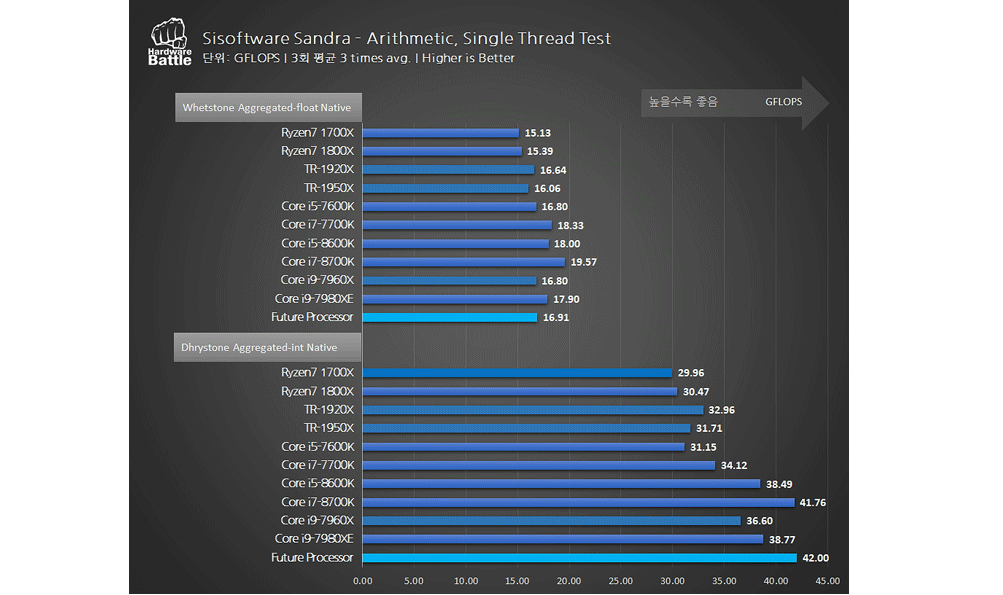 30 GHz
30 GHz Intel UHD Graphics 630
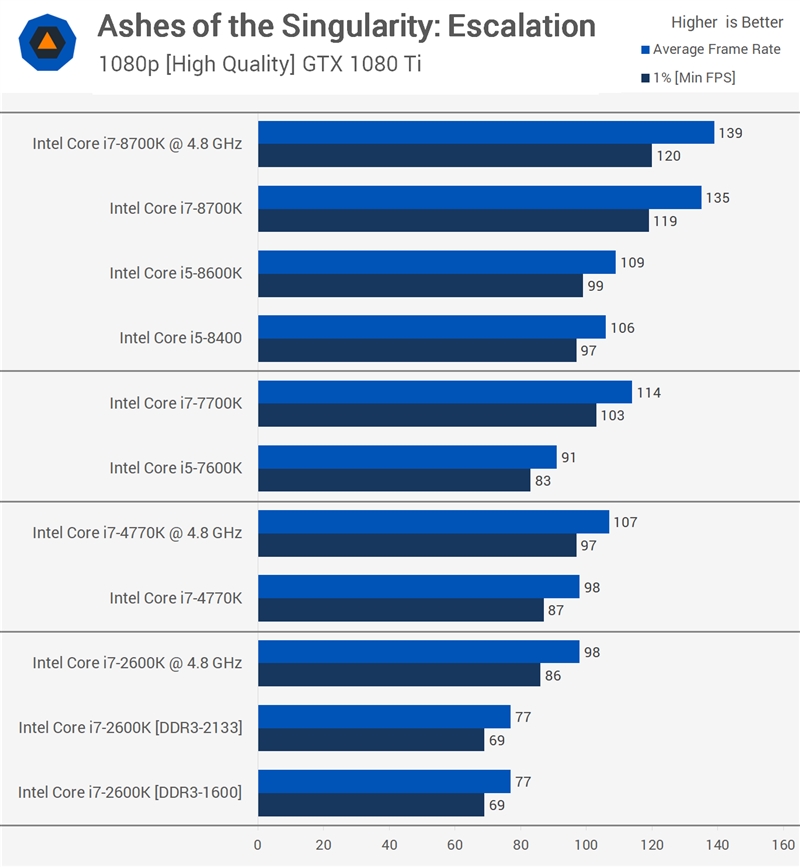 00 MB
00 MB Show more details
Show more details
Cinebench R23 (Single-Core)
Cinebench R23 is the successor to Cinebench R20 and is also based on the Cinema 4 Suite. Cinema 4 is software used all over the world to create 3D forms. The single-core test uses only one CPU core, the number of cores or hyper-threading capability is not taken into account.
Cinebench R23 (Multi-Core)
Cinebench R23 is the successor to Cinebench R20 and is also based on the Cinema 4 Suite. Cinema 4 is software used all over the world to create 3D forms. The multi-core test uses all the CPU cores and has a big advantage of hyper-threading.
Cinema 4 is software used all over the world to create 3D forms. The multi-core test uses all the CPU cores and has a big advantage of hyper-threading.
Cinebench R20 (Single-Core)
Cinebench R20 is the successor to Cinebench R15 and is also based on the Cinema 4 Suite. Cinema 4 is software used all over the world to create 3D forms. The single-core test uses only one CPU core, the number of cores or hyper-threading capability is not taken into account.
Cinebench R20 (Multi-Core)
Cinebench R20 is the successor to Cinebench R15 and is also based on Cinema 4 Suite. Cinema 4 is software used all over the world to create 3D forms. The multi-core test uses all the CPU cores and has a big advantage of hyper-threading.
Cinebench R15 (Single-Core)
Cinebench R15 is the successor to Cinebench 11.5 and is also based on the Cinema 4 Suite. Cinema 4 is software used all over the world to create 3D forms. The single-core test uses only one CPU core, the number of cores or hyper-threading capability is not taken into account.
Cinebench R15 (Multi-Core)
Cinebench R15 is the successor to Cinebench 11.5 and is also based on Cinema 4 Suite. Cinema 4 is software used all over the world to create 3D forms. The multi-core test uses all the CPU cores and has a big advantage of hyper-threading.
Geekbench 5, 64bit (Single-Core)
Geekbench 5 is a memory-intensive cross-platform benchmark. A fast memory will greatly push the result. The single-core test uses only one CPU core, the number of cores or hyper-threading capability is not taken into account.
Geekbench 5, 64bit (Multi-Core)
Geekbench 5 is a memory-intensive, cross-platform benchmark. A fast memory will greatly push the result. The multi-core test uses all the CPU cores and has a big advantage of hyper-threading.
iGPU — FP32 Performance (Single-precision GFLOPS)
Theoretical processing performance of the processor’s internal graphics unit with simple precision (32 bits) in GFLOPS. GFLOPS specifies how many billions of floating point operations the iGPU can perform per second.
Blender 2.81 (bmw27)
Blender is a free 3D graphics software for rendering (creating) 3D bodies that can also be textured and animated in the program. The Blender test creates predefined scenes and measures the time(s) required for the entire scene. The less time it takes, the better. We chose the bmw27 as our reference scene.
Geekbench 3, 64bit (Single-Core)
Geekbench 3 is a cross-platform benchmark that is memory intensive. A fast memory will greatly push the result. The single-core test uses only one CPU core, the number of cores or hyper-threading capability is not taken into account.
Geekbench 3, 64bit (Multi-Core)
Geekbench 3 is a cross-platform benchmark that is memory intensive. A fast memory will greatly push the result. The multi-core test uses all the CPU cores and has a big advantage of hyper-threading.
Cinebench R11.5, 64bit (Single-Core)
Cinebench 11.5 is based on the Cinema 4D Suite, a software that is popular for creating shapes and other things in 3D. The single-core test uses only one CPU core, the number of cores or hyper-threading capability is not taken into account.
The single-core test uses only one CPU core, the number of cores or hyper-threading capability is not taken into account.
Cinebench R11.5, 64bit (Multi-Core)
Cinebench 11.5 is based on Cinema 4D Suite, a software that is popular for creating shapes and other things in 3D. The multi-core test uses all the CPU cores and has a big advantage of hyper-threading.
Cinebench R11.5, 64bit (iGPU, OpenGL)
Cinebench 11.5 is based on Cinema 4D Suite, a software that is popular for creating shapes and other things in 3D. The iGPU test uses the CPU’s internal graphics unit to execute OpenGL commands.
Estimated results for PassMark CPU Mark
Some of the processors listed below have been tested with CPU-Comparison. However, most of the processors were not tested and the results were evaluated by the secret patented CPU-Comparison formula. As such, they do not accurately reflect the actual values of Passmark CPU ratings and are not endorsed by PassMark Software Pty Ltd.
Monero Hashrate kH/s
Monero has been using the RandomX algorithm since November 2019of the year. This PoW (proof of work) algorithm can only be computed efficiently using either a processor (CPU) or a graphics card (GPU). The CryptoNight algorithm was used for Monero until November 2019, but it could be calculated using ASICs. RandomX benefits from a large number of CPU cores, cache, and fast memory connectivity through as many memory channels as possible.
Estimated energy use
Average hours of use per day
Average CPU usage (0-100%)
Cost of electricity, USD/kWh
Estimated energy use
Average hours of use per day
Average CPU usage (0-100%)
Cost of electricity, USD/kWh
| AMD Ryzen Threadripper 1920X | Intel Core i7-8700K | |
| 180W | Max TDP | 95W |
| NA | Power consumption per day (kWh) | NA |
| NA | Operating cost per day | NA |
| NA | Power consumption per year (kWh) | NA |
| NA | Cost per year | NA |
Popular comparison
Comments0003
|
Release price |
|
$107 -692 $ (-86. vs 799 $ |
|
Value for money |
|
63.9% 36.6% (134.1%) better than vs 27.3% |
|
Power Demand (TDP) |
|
15 W -165 W (-91.7%) better than vs 180 W |
|
Allowed memory size |
|
32 GB 30 GB (1500%) better than vs 2 GB |
Advantages of AMD Ryzen Threadripper 1920X
Comparison winner
|
Core |
|
12 10 (500%) better than vs 2 |
|
threads |
|
24 22 (1100%) better than vs 2 |
|
Maximum frequency |
|
4. At 2.4 GHz (133.3%) better than vs 1.8 GHz |
| Passmark |
|
22731 21397 (1604%) better than vs 1334 |
| General information | |
|
Type |
|
| For laptops | Desktop |
|
Architecture code name |
|
| Whiskey Lake-U | Zen |
|
Cores A large number of cores improves performance in multi-threaded applications. |
|
| 2 | 12
10 (500%) better than |
|
Threads More threads help the cores process information more efficiently. Real performance will be noticeable in very specific tasks (video editing, databases). |
|
| 2 | 24
22 (1100%) better than |
|
Base frequency |
|
| n/a | 3.5 GHz |
|
Process |
|
| 14 nm | 14 nm |
|
Crystal size |
|
| n/a | 213 mm2 |
|
Number of transistors |
|
| n/a | 9 million |
|
Maximum frequency Faster clocked processors perform more calculations per second and thus provide better performance. |
|
| 1.8GHz | 4.2 GHz
At 2.4 GHz (133.3%) better than |
|
Support 64 bit |
|
|
Max. number of processors in configuration |
|
| 1 | 1 (Uniprocessor) |
|
Socket |
|
| FCBGA1528 | SP3r2 |
|
AMD-V |
|
|
Series |
|
| Intel Celeron | AMD Ryzen Threadripper |
|
Release price |
|
| 107 $
-692 $ (-86. |
799 $ |
|
Value for money The sum of all device benefits divided by its price. The more%, the better the quality per unit price in comparison with all analogues. |
|
| 63.9%
36.6% (134.1%) better than |
27.3% |
|
Tire |
|
| n/a | 4 × 8 GT/s |
|
Maximum core temperature |
|
| 100 °C | n/a |
|
vPro |
|
|
TXT Intel Trusted Execution Technology for hardware-based malware protection. For each protected program, the processor allocates its own isolated section of RAM. |
|
|
PCI Express revision |
|
| 2.0 | 3.0 |
|
Number of PCI-Express lanes |
|
| 12 | 60 |
|
Secure Key |
|
|
Identity Protection |
|
| + | n/a |
|
SGX |
|
| Yes with Intel® ME | n/a |
|
OS Guard |
|
| + | n/a |
|
Flex Memory Access |
|
| + | n/a |
|
Quick Sync |
|
| + | n/a |
|
eDP |
|
| + | n/a |
|
HDMI |
|
| + | n/a |
|
My WiFi |
|
| + | n/a |
|
Level 1 Cache The fastest level of cache that works directly with the core. |
|
| 128 Kb | 96K (per core) |
|
Level 2 cache |
|
| 512 KB | 512K (per core) |
|
Level 3 cache |
|
| 2 MB | 32 Mb |
|
Free multiplier |
|
|
Power Demand (TDP) The calculated heat output indicates the average heat dissipation during load operation, |
|
| 15W
-165 W (-91.7%) better than |
180 W |
|
EDB |
|
| + | n/a |
|
Video memory size |
|
| 32 GB | n/a |
|
Clear Video |
|
| + | n/a |
|
4K support |
|
| + | n/a |
|
DisplayPort |
|
| + | n/a |
|
DVI |
|
| + | n/a |
|
Smart Response |
|
| + | n/a |
| 22731
21397 (1604%) better than |
||
|
Cinebench 15 64-bit multi-core |
||
| 136 | n/a | |
|
Cinebench R20 single core |
||
| n/a | 398 | |
|
Cinebench R20 multi core |
||
| n/a | 5319 | |
| Technology and additional instructions | |
|
Extended instructions |
|
Intel® SSE4. 1, Intel® SSE4.2 1, Intel® SSE4.2 |
n/a |
|
Turbo Boost |
|
| — | n/a |
|
Idle States |
|
|
Enhanced SpeedStep (EIST) Technology from Intel that reduces the processor frequency to a minimum to save power when the processor is idle. |
|
|
Speed Shift Technology from Intel that provides fast response to short-term loads, allowing the processor to select the optimal voltage and operating frequency. The transition to low power consumption and output is much faster. |
|
|
Thermal Monitoring |
|
|
Hyper-Threading Intel hardware technology that allows multiple threads to be processed on each processor core. |
|
|
AES-NI Technology from Intel that speeds up the AES encryption process. |
|
| + | + |
|
AVX The presence of AVX commands improves performance in floating point and processor-intensive operations |
|
| RAM parameters | |
|
RAM types |
|
| DDR4-2133, LPDDR3-1866 | DDR4 4x channel |
|
Allowable memory The maximum amount of RAM that can be used with this processor. |
|
| 32 GB
30 GB (1500%) better than |
2 GB |
|
Number of memory channels |
|
| 2 | 4 |
|
ECC memory support EEC memory is designed specifically for systems with high requirements for data processing reliability. |
|
| Virtualization Technologies | |
|
VT-x |
|
|
EPT |
|
|
VT-d Intel virtualization technology allows you to forward devices on the PCI bus to the guest operating system so that it can work with them using its standard tools. |
|
| Integrated graphics | ||
| n/a | ||
|
Maximum number of monitors |
||
| 3 | n/a | |
|
Clear Video HD |
||
|
Video core The presence of the video core allows you to use your computer without using a video card. |
||
| + | — | |
|
Maximum resolution via HDMI 1.4 |
||
| 4096×2304@24Hz | n/a | |
|
Maximum resolution via eDP |
||
| 4096×2304@60Hz | n/a | |
|
Maximum resolution via DisplayPort |
||
| 4096×2304@60Hz | n/a | |
|
DirectX |
||
| 12 | n/a | |
|
OpenGL |
||
| 4.5 | n/a | |
Comparison of AMD Ryzen Threadripper 1920X and Intel Atom D2700
Comparative analysis of AMD Ryzen Threadripper 1920X and Intel Atom D2700 processors by all known characteristics in the categories: General Information, Performance, Memory, Compatibility, Peripherals, Technology, Virtualization, Graphics, Graphical Interfaces, Security and Reliability.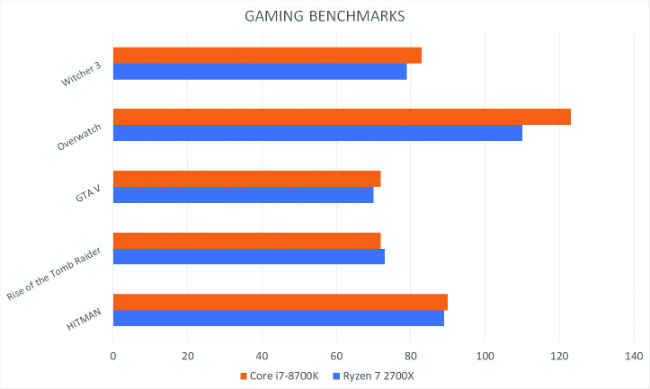
Analysis of processor performance by benchmarks: PassMark — Single thread mark, PassMark — CPU mark, Geekbench 4 — Single Core, Geekbench 4 — Multi-Core, 3DMark Fire Strike — Physics Score.
AMD Ryzen Threadripper 1920X
versus
Intel Atom D2700
Advantages
reasons to select AMD Ryzen Threadripper 1920x
- The processor is more, the difference in the release of 5 year (s)
- processor is unlocked, the processor is unlock
- 10 more cores, the ability to run more applications simultaneously: 12 vs 2
- 20 more threads: 24 vs 4
- Approximately 88% more clock speed: 4 GHz vs 2.13 GHz
- A newer manufacturing process allows the processor to be more powerful, but with lower power consumption: 14 nm vs 32 nm
- L1 cache is 9 times larger, so more data can be stored in it for quick access
- L2 cache is 6 times larger, so more data can be stored in it for quick access
- Performance in PassMark benchmark — Single thread mark in 5.
 9times more: 2302 vs 387
9times more: 2302 vs 387 - 46.3 times more performance in PassMark — CPU mark benchmark: 22773 vs 492
- About 42% more performance in Geekbench 4 — Single Core benchmark: 983 vs 691
- 6.2x better performance on Geekbench 4 — Multi-Core benchmark: 8440 vs 1354
| Release date | 31 July 2017 vs 28 December 2011 |
| Unlocked | Unlocked / Locked |
| Number of cores | 12 vs 2 |
| Number of threads | 24 vs 4 |
| Maximum frequency | 4 GHz vs 2.13 GHz |
| Process | 14 nm vs 32 nm |
| Level 1 cache | 1152 KB vs 64 KB (per core) |
| Level 2 cache | 6 MB vs 1024 KB |
| PassMark — Single thread mark | 2302 vs 387 |
| PassMark — CPU mark | 22773 vs 492 |
| Geekbench 4 — Single Core | 983 vs 691 |
| Geekbench 4 — Multi-Core | 8440 vs 1354 |
Reasons to choose Intel Atom D2700
- Approximately 47% more max core temperature: 100°C vs 68°C
- 18 times lower power consumption: 10 Watt vs 180 Watt
Max core temperature
| 100°C vs 68°C | |
| Power consumption (TDP) | 10 Watt vs 180 Watt |
Benchmark comparison
CPU 1: AMD Ryzen Threadripper 1920X
CPU 2: Intel Atom D2700
| PassMark — Single thread mark |
|
|||
| PassMark — CPU mark |
|
|||
| Geekbench 4 — Single Core |
|
|||
| Geekbench 4 — Multi-Core |
|
| Name | AMD Ryzen Threadripper 1920X | Intel Atom D2700 |
|---|---|---|
| PassMark — Single thread mark | 2302 | 387 |
| PassMark — CPU mark | 22773 | 492 |
| Geekbench 4 — Single Core | 983 | 691 |
| Geekbench 4 — Multi-Core | 8440 | 1354 |
| 3DMark Fire Strike — Physics Score | 8387 |
Feature comparison
| AMD Ryzen Threadripper 1920X | Intel Atom D2700 | |
|---|---|---|
| Architecture name | Zen | Cedarview |
| Family | AMD Ryzen Processors | |
| Issue date | July 31, 2017 | 28 December 2011 |
| Price at first issue date | $800 | $52 |
| OPN PIB | YD192XA8AEWOF | |
| OPN Tray | YD192XA8UC9AE | |
| OS Support | Windows 10 — 64-Bit Edition, RHEL x86 64-Bit, Ubuntu x86 64-Bit | |
| Place in the rating | 495 | 2306 |
| Price now | $419.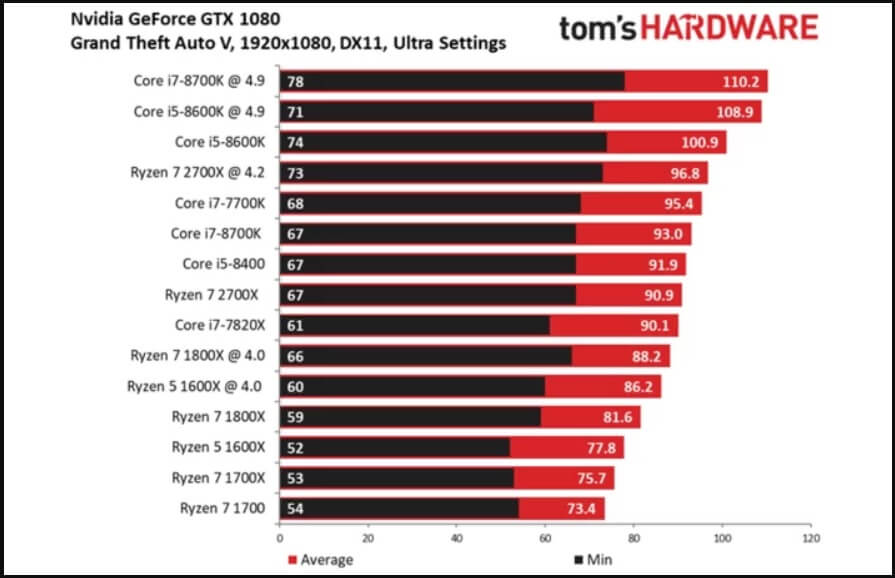 95 95 |
|
| Series | AMD Ryzen Threadripper Processors | Intel® Atom™ Processor D Series |
| Price/performance ratio (0-100) | 13.14 | |
| Applicability | Desktop | Desktop |
| Processor Number | D2700 | |
| Status | Discontinued | |
| Support 64 bit | ||
| Base frequency | 3. 5 GHz 5 GHz |
2.13 GHz |
| Crystal area | 213 mm | 66mm |
| Level 1 cache | 1152KB | 64 KB (per core) |
| Level 2 cache | 6MB | 1024KB |
| Level 3 cache | 32MB | |
| Process | 14nm | 32nm |
| Maximum core temperature | 68°C | 100 °C |
| Maximum frequency | 4GHz | 2. 13 GHz 13 GHz |
| Number of cores | 12 | 2 |
| Number of threads | 24 | 4 |
| Number of transistors | 9600 million | 176 million |
| Unlocked | ||
| Bus Speed | 2.5 GT/s DMI | |
| Permissible core voltage | 0.91V-1.21V | |
| Maximum number of memory channels | 4 | 1 |
| Supported memory frequency | 2667 MHz | |
| Supported memory types | DDR4 | DDR3 800/1066 |
| Maximum memory bandwidth | 6.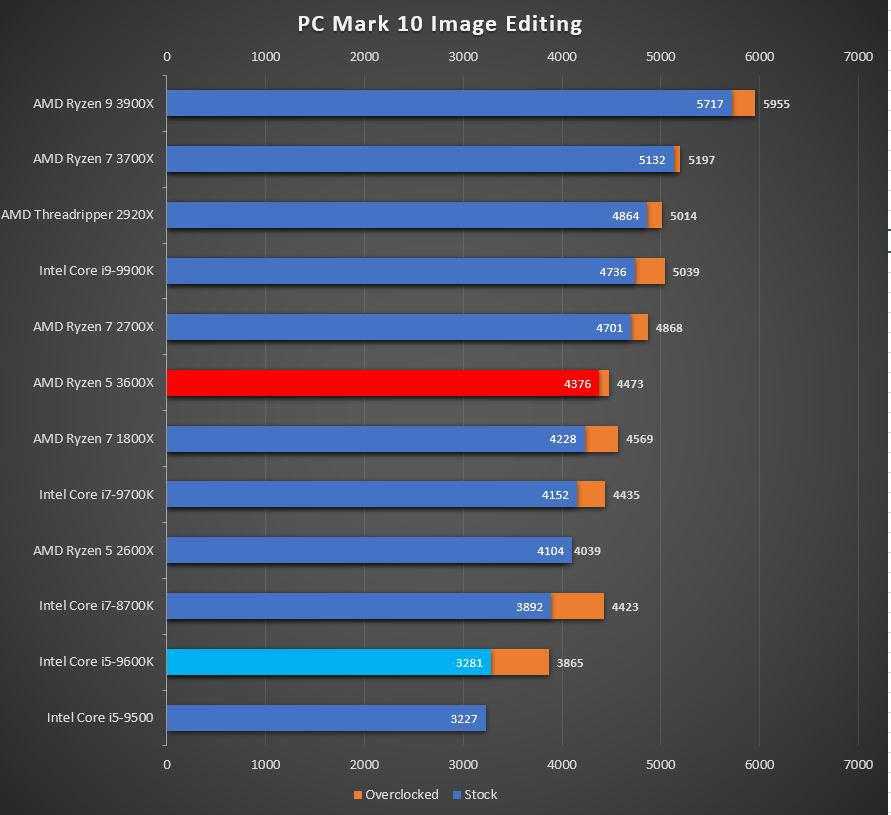 4 GB/s 4 GB/s |
|
| Maximum memory size | 4 GB | |
| Maximum number of processors in | 1 | 1 |
| Supported sockets | sTR4 | FCBGA559 |
| Power consumption (TDP) | 180 Watt | 10 Watt |
| Thermal Solution | Not included | |
| Low Halogen Options Available | ||
| Package Size | 22mmX22mm | |
| PCI Express revision | 3. 0 0 |
|
| Number of PCI Express lanes | 4 | |
| Number of USB ports | 8 | |
| Total number of SATA ports | 2 | |
| AMD Ryzen VR-Ready Premium | ||
| AMD SenseMI | ||
| Enmotus FuzeDrive | ||
| Fused Multiply-Add 3 (FMA3) | ||
| Intel® Advanced Vector Extensions 2 (AVX2) | ||
| Intel® AES New Instructions | ||
| The «Zen» Core Architecture | ||
| Enhanced Intel SpeedStep® Technology | ||
| HD Audio | ||
| Extended instructions | Intel® SSE2, Intel® SSE3, Intel® SSSE3 | |
| Intel 64 | ||
| Intel® Active Management Technology (AMT) | ||
| Intel® Demand Based Switching | ||
| Intel® Hyper-Threading Technology | ||
| Intel® ME Firmware Version | No. |
|
| Intel® Turbo Boost Technology | ||
| Intel® vPro™ Platform Eligibility | ||
| Physical Address Extensions (PAE) | 36-bit | |
| AMD Virtualization (AMD-V™) | ||
| Intel® Virtualization Technology (VT-x) | ||
| Intel® Virtualization Technology for Directed I/O (VT-d) | ||
| Graphics base frequency | 640MHz | |
| Integrated graphics | Integrated | |
| Maximum number of monitors supported | 2 | |
| Execute Disable Bit (EDB) |
AMD Ryzen Threadripper 1920X Processor Review
I would like to start every article about the Ryzen CPU with nice words about AMD, which again made the processor market competitive. Home users have already managed to make sure that the mainstream first-generation Ryzen solutions compete on equal terms with gems intel core. Yes, 14nm products from AMD are not very compatible with DDR4 RAM, but the second generation of these devices has already appeared in stores, which solve the existing problem.
Home users have already managed to make sure that the mainstream first-generation Ryzen solutions compete on equal terms with gems intel core. Yes, 14nm products from AMD are not very compatible with DDR4 RAM, but the second generation of these devices has already appeared in stores, which solve the existing problem.
AMD believes the Ryzen Threadripper Gems are ideal for gamers, content creators, and professionals.
In any case, AMD Ryzen processors are just as good for building a gaming or multimedia system as older generations of Intel Core.
Everyone knows that last year AMD prepared extremely curious stones called Ryzen Threadripper with an impressive number of physical cores for professionals. These are expensive, but extremely productive CPUs compatible with Socket TR4. Their direct task is to compete with multi-core Intel Core X processors.
AMD believes that the Ryzen Threadripper stones are ideal for gamers, content creators and professionals. Moreover, these CPUs are too good to perform any one operation, so the company recommends using these devices to solve several tasks at once on one system (in parallel).
Moreover, these CPUs are too good to perform any one operation, so the company recommends using these devices to solve several tasks at once on one system (in parallel).
Today we’ll take a look at the AMD Ryzen Threadripper 1920X processor, the second most powerful gem in the TR (first generation) lineup.
Specifications and features
14nm AMD Ryzen Threadripper 1920X CPU with 12 physical cores (24 threads), 32MB L3 cache (6MB L2). The nominal clock frequency of the device is 3500 MHz, in the acceleration mode the processor operates at 4 GHz.
| Intel Core i7-8700K | Intel Core i9-7900X | AMD Ryzen Threadripper 1920X | Intel Core i9-7960X | |
|---|---|---|---|---|
| Process | 14 nm | 14 nm | 14 nm | 14 nm |
| socket | 1151 | 2066 | TR4 | 2066 |
| Cores/Threads | 6/12 | 10/20 | 12/24 | 16/32 |
| Clock frequency | 3700/4700 MHz | 3300/4300 MHz | 3500/4000 MHz | 2800/4200 MHz |
| L3 cache | 12 MB | 13. 75 MB 75 MB |
32 MB | 22 MB |
| TDP | 95W | 140W | 180W | 165W |
| Unlocked multiplier | Yes | Yes | Yes | Yes |
| Memory | DDR4-2666 2ch | DDR4-2666 4ch | DDR4-2667 4ch | DDR4-2666 4ch |
| Cost | $360 | $999 | $600 | $1699 |
The AMD Ryzen Threadripper 1920X is compatible with quad-channel DDR4-2667 memory (including ECC variants) and AMD X399 chipset.
Rated TDP 12-core monster — 180 watts. On paper, the figure looks intimidating, but this CPU cannot be called too hot. To cool the AMD Ryzen Threadripper 1920X, we used a far from the most dimensional Noctua NH-U14S TR4-SP3 air cooler.
As a result, there was no talk of overheating, while the cooling system worked quite quietly (only in stress tests did the fan start to rotate at maximum speed).
Thus, users who choose one of the AMD Ryzen Threadripper processors for their tasks should not necessarily fork out for a liquid cooling system, an air cooler with a TDP of 140-200 W will also cope with heat dissipation.
Dimensions and mounting
The appearance of AMD Ryzen Threadripper processors has become the subject of heated discussions and jokes among users of the worldwide network. The surveyed stone is indeed quite large. But this form factor also has its advantages. AMD has competently approached the process of installing the device in Socket TR4.
The Ryzen Threadripper 1920X does not have pins , they are in the socket itself (as is the case with Intel Core X), which means that the chance of bending them is minimal. Moreover, the CPU from AMD is nominally placed in a plastic frame, which is easily mounted into the grooves of the metal base of Socket TR4.
To install the AMD Ryzen Threadripper 1920X in Socket TR4, you need to unscrew the three shaped bolts using a special screwdriver that is included in the kit.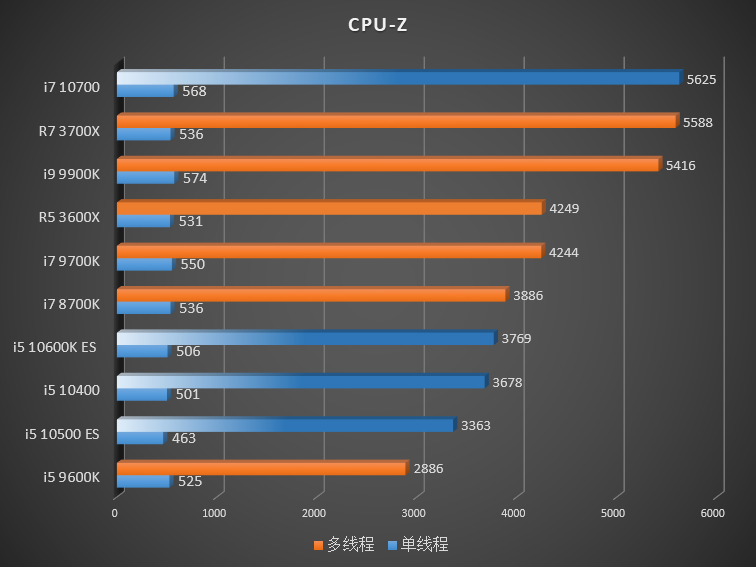 Next, remove the plastic protective panel, place the processor in its place and re-tighten the three indicated bolts. Everything is very simple.
Next, remove the plastic protective panel, place the processor in its place and re-tighten the three indicated bolts. Everything is very simple.
Memory Compatibility
Many users are aware of the poor compatibility of first generation AMD Ryzen (for Socket AM4) processors with DDR4 RAM. Sometimes it is very difficult to choose a workable kit. At the same time, no one guarantees that the profile kit will start at the required frequency.
Ryzen Threadripper is much better. With a test set of RAM, the monitored processor started up immediately, and at the required frequency. The memory was even overclocked, but we’ll talk about that below.
Test bench:
Motherboard — ASUS Prime X399-A
RAM — Kingston HyperX Fury DDR4-2666 8 GB
Graphics card — ASUS ROG Strix GTX 1080 Ti
Drive — Kingston A400 1202 GB cubler -U14S TR4-SP3
Power Supply — ThunderX3 Plexus 800
Performance and test results
In professional tasks, AMD Ryzen Threadripper 1920X competes on equal terms with direct competitors from the Intel Core X camp (namely, Intel Core i9-7960X and Core i9-7900X).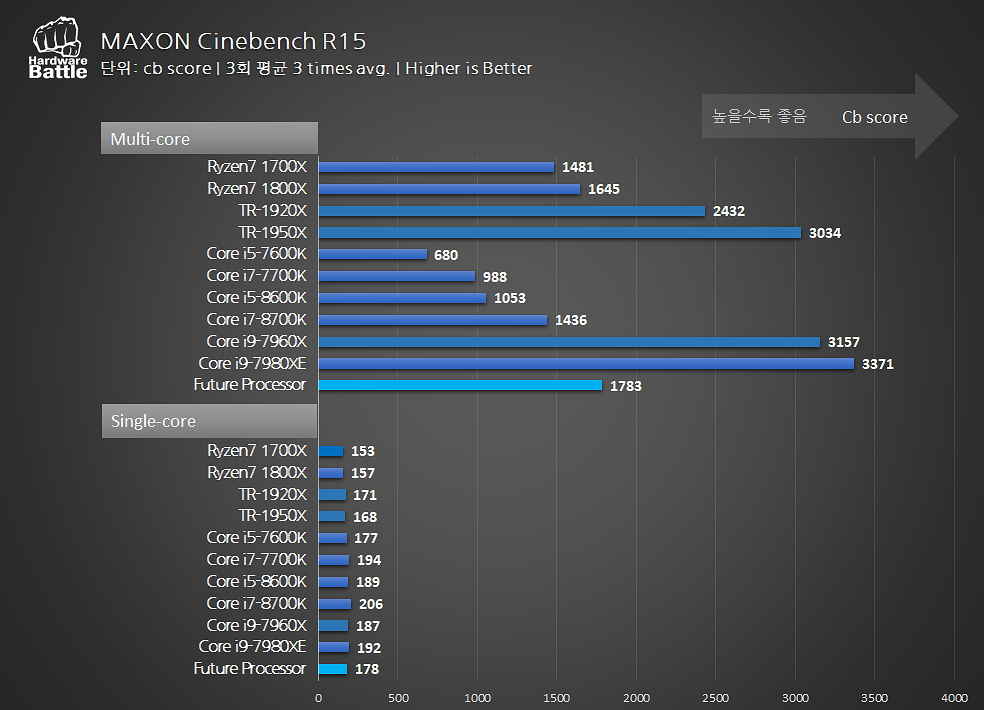 Although in operations where a high clock speed is important, Intel CPUs seem to be preferable.
Although in operations where a high clock speed is important, Intel CPUs seem to be preferable.
Single core power is still more impressive in solutions from Intel. This is noticeable, again, in profile system benchmarks, as well as in gaming applications. Especially in Full HD resolution.
Obviously, devices from the AMD Ryzen Threadripper line, just like from the Intel Core X lineup, are not gaming processors (although both manufacturers refer these products to the extreme gaming niche ), they are too good for such tasks. However, in games, the difference between Intel and AMD is especially noticeable (maybe it’s just a matter of optimization).
For example, in the Ghost Recon: Wildlands project, the capabilities of the AMD Ryzen Threadripper 1920X are used only 28% at 1080p and 21% at 1440p. In Full HD, Intel Core processors are better than rock top-end graphics card (GeForce GTX 1080 Ti) than AMD Ryzen TR; as a result, at low resolutions, we see a higher average frame / s from Intel (at 1440p and 2160p, the result is almost the same).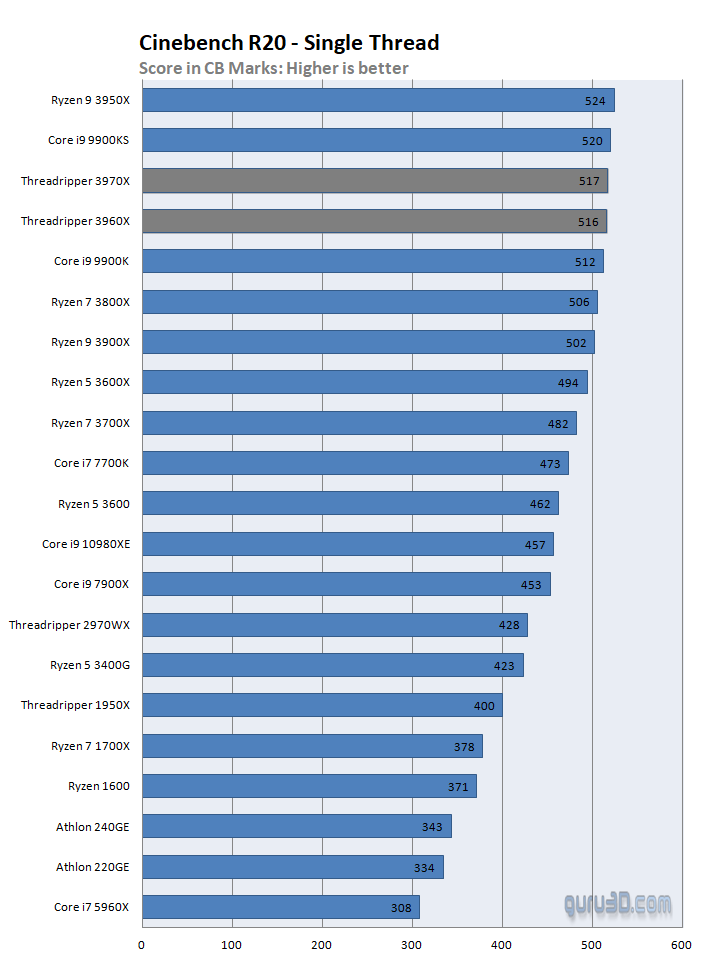
Overclocking
The AMD Ryzen Threadripper 1920X has an unlocked multiplier, which means that any user has the right to overclock stone . That’s just the frequency potential of this device is low.
AMD Ryzen Threadripper 1920X is a great alternative to the multi-core Intel Core X.
Using an air cooler, we managed to achieve 3900-4000 MHz (on 12 cores), no higher. Moreover, not all applications and games at this frequency functioned stably.
The conclusion is very simple: it is better not to overclock the AMD Ryzen Threadripper line of processors, you still won’t achieve a significant increase in performance, but you will definitely lose stability. If you have liquid nitrogen at your disposal, it is definitely worth fighting for the record, otherwise (air or water) — no.
Trying to overclock RAM on a system with an AMD Ryzen Threadripper 1920X won’t do any good. It is known that the Kingston HX426C15FBK2 / 8 kit functions stably at 3066 MHz, in our case it was possible to start it only at 2933 MHz. But even in this format, we again encountered not the most adequate behavior of the PC.
But even in this format, we again encountered not the most adequate behavior of the PC.
Some applications gave a normal (and somewhere even higher compared to the nominal DDR4-2666) result, but somewhere the result turned out to be lower.
Conclusion
AMD Ryzen Threadripper processors (just like the younger Ryzen) are not designed for air enthusiasts and home overclockers , despite the presence of an unlocked multiplier. First generation devices are able to perfectly cope with existing tasks / programs at default frequencies.
Single core power is still more impressive in solutions from Intel.
AMD Ryzen Threadripper 19The 20X is a great alternative to the multi-core Intel Core X. CPUs with the same number of processing threads show approximately equal performance in core applications, while AMD options are cheaper at retail.
It’s great that AMD managed to create a competitive product in the professional segment (platforms with Socket LGA 2066 and TR4 should be included in this category), and the consumer has a choice.

 5 FPS
5 FPS 5 FPS
5 FPS 6%) better than
6%) better than  2 GHz
2 GHz

 6%) better than
6%) better than  The larger the cache, the better the performance.
The larger the cache, the better the performance. 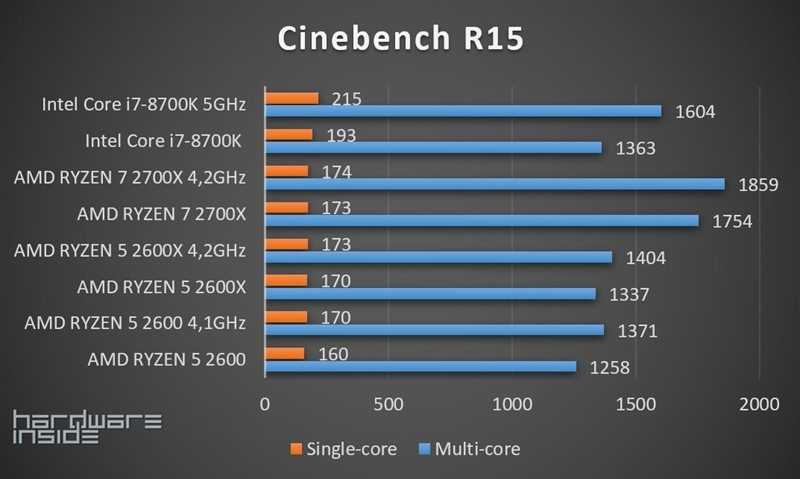 For server applications, the performance improvement is up to 30%.
For server applications, the performance improvement is up to 30%. 
